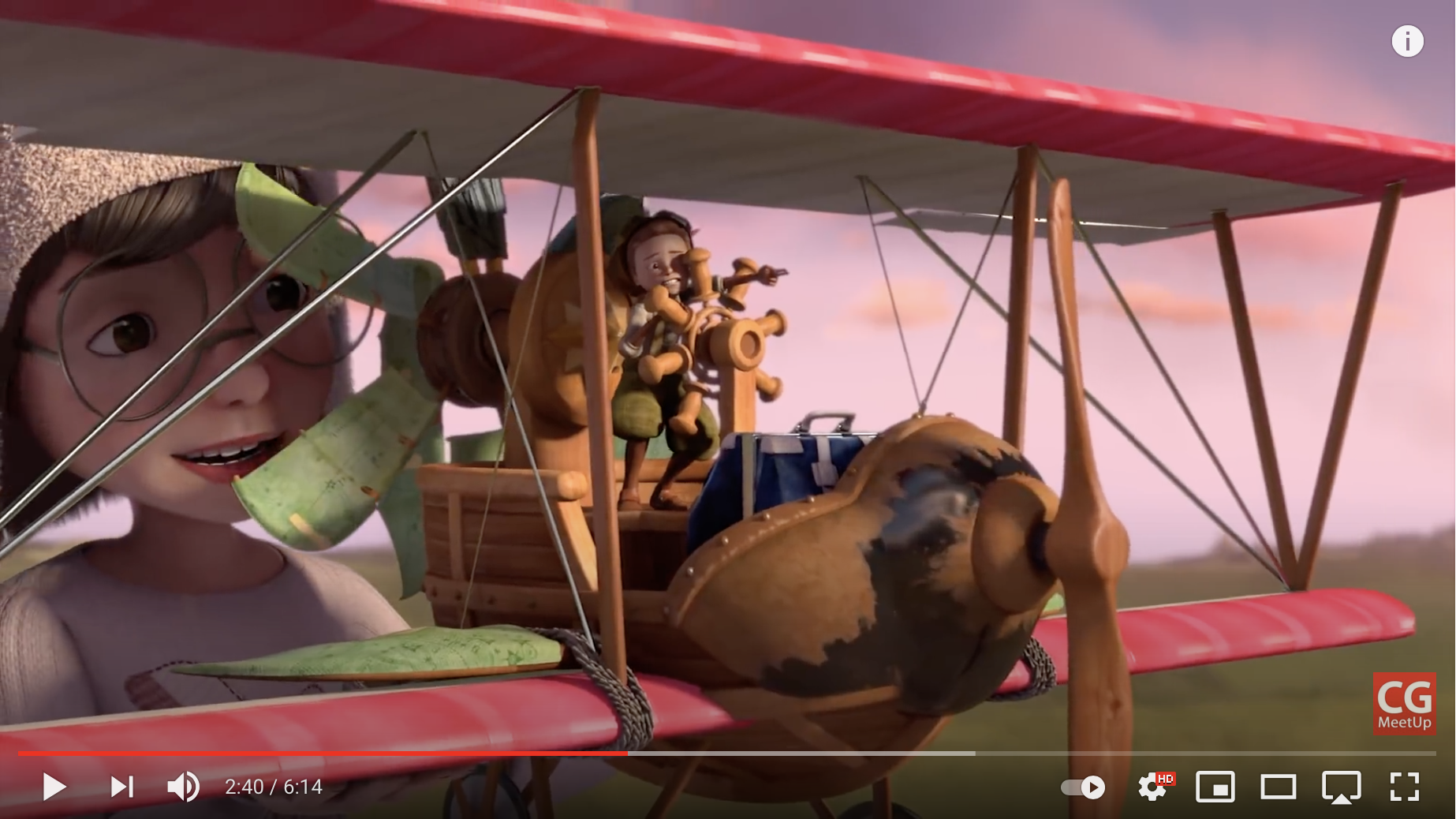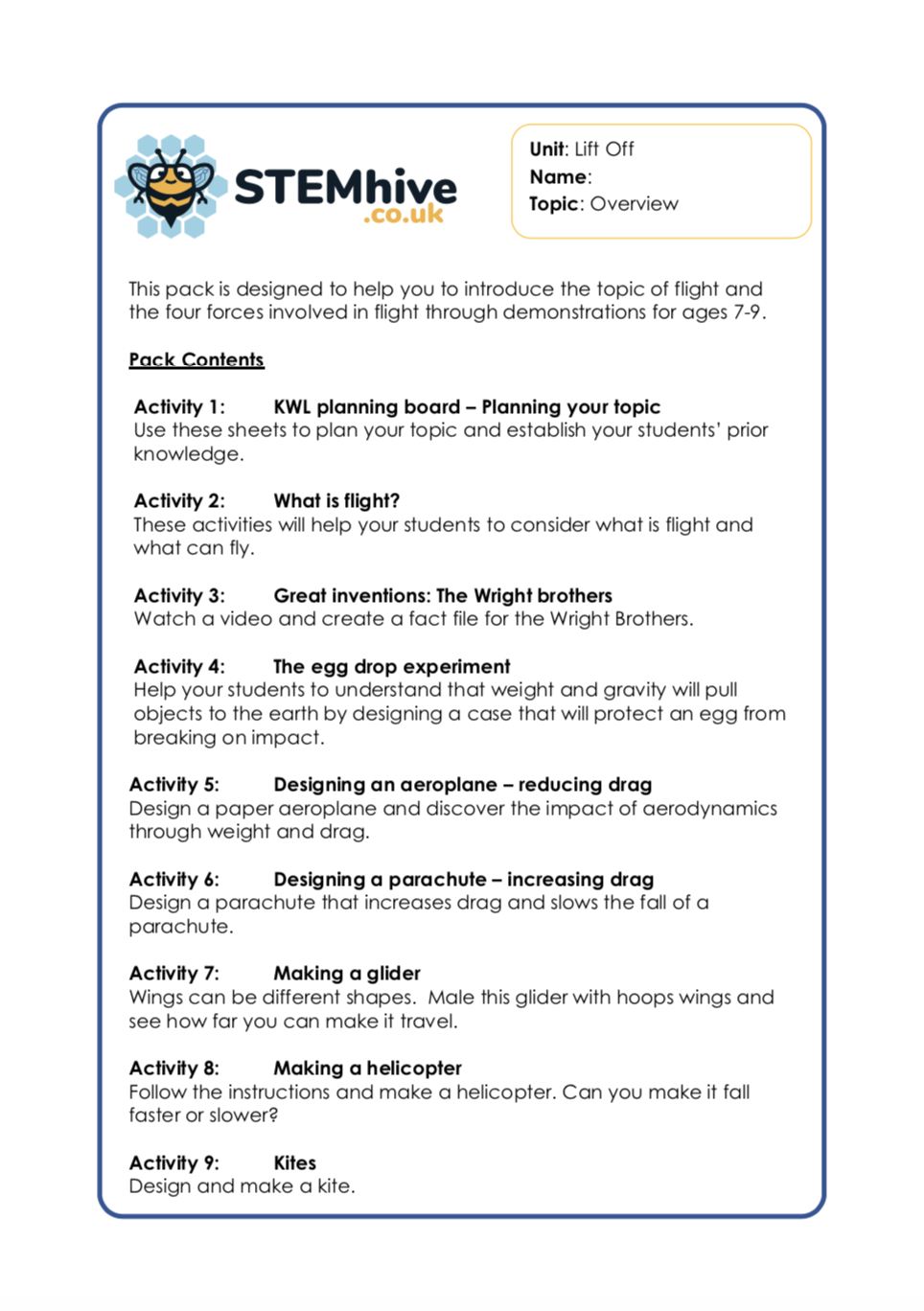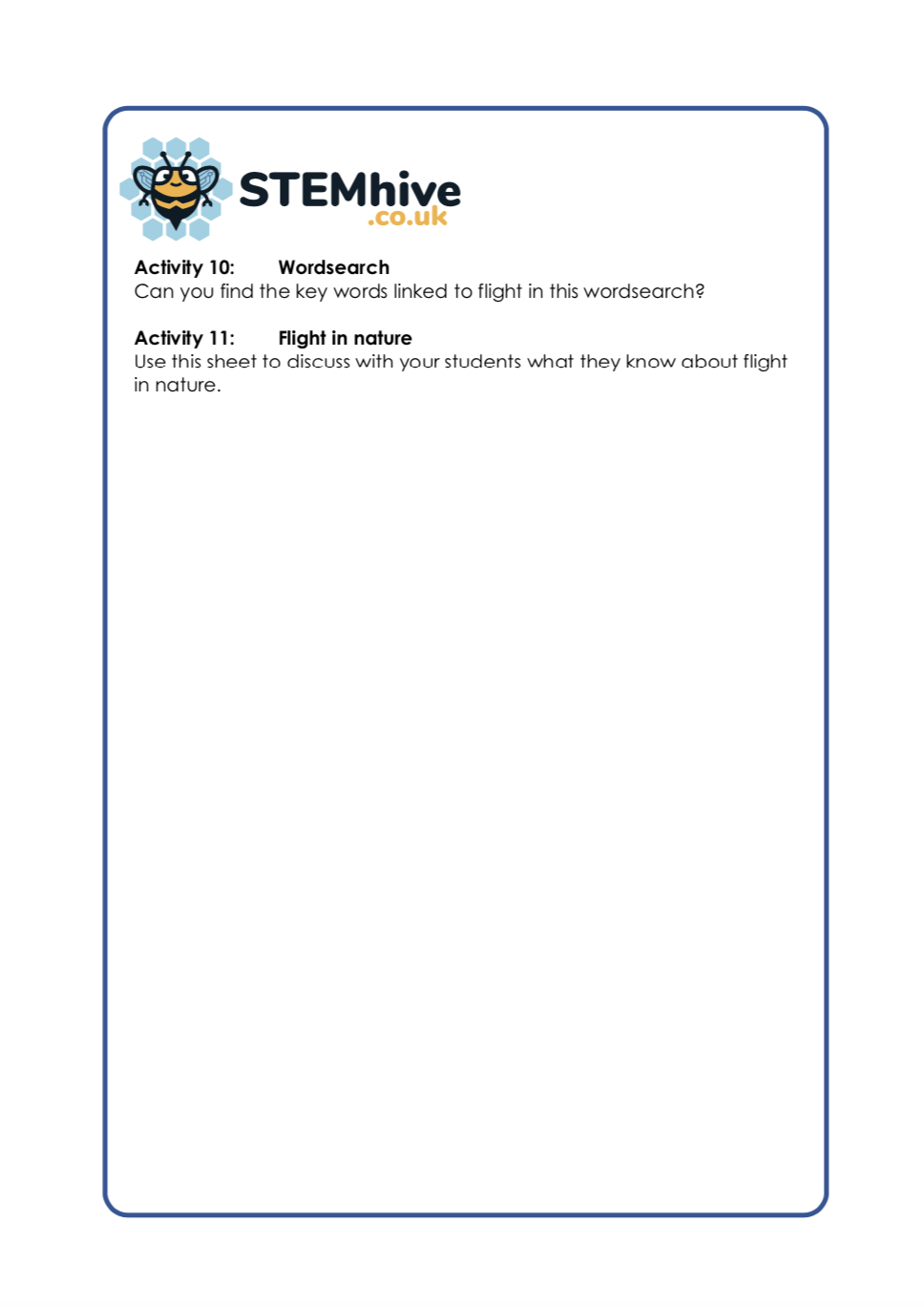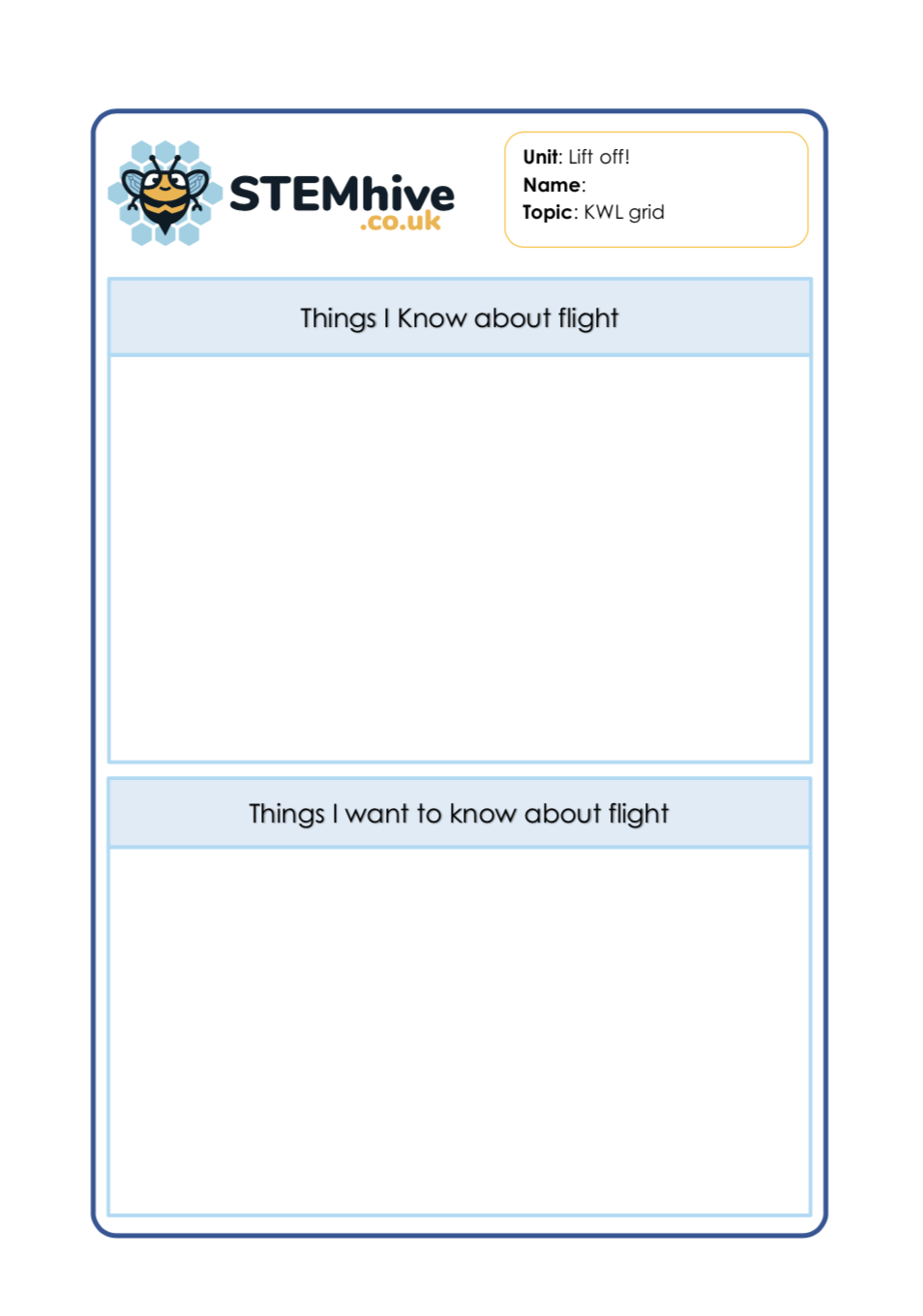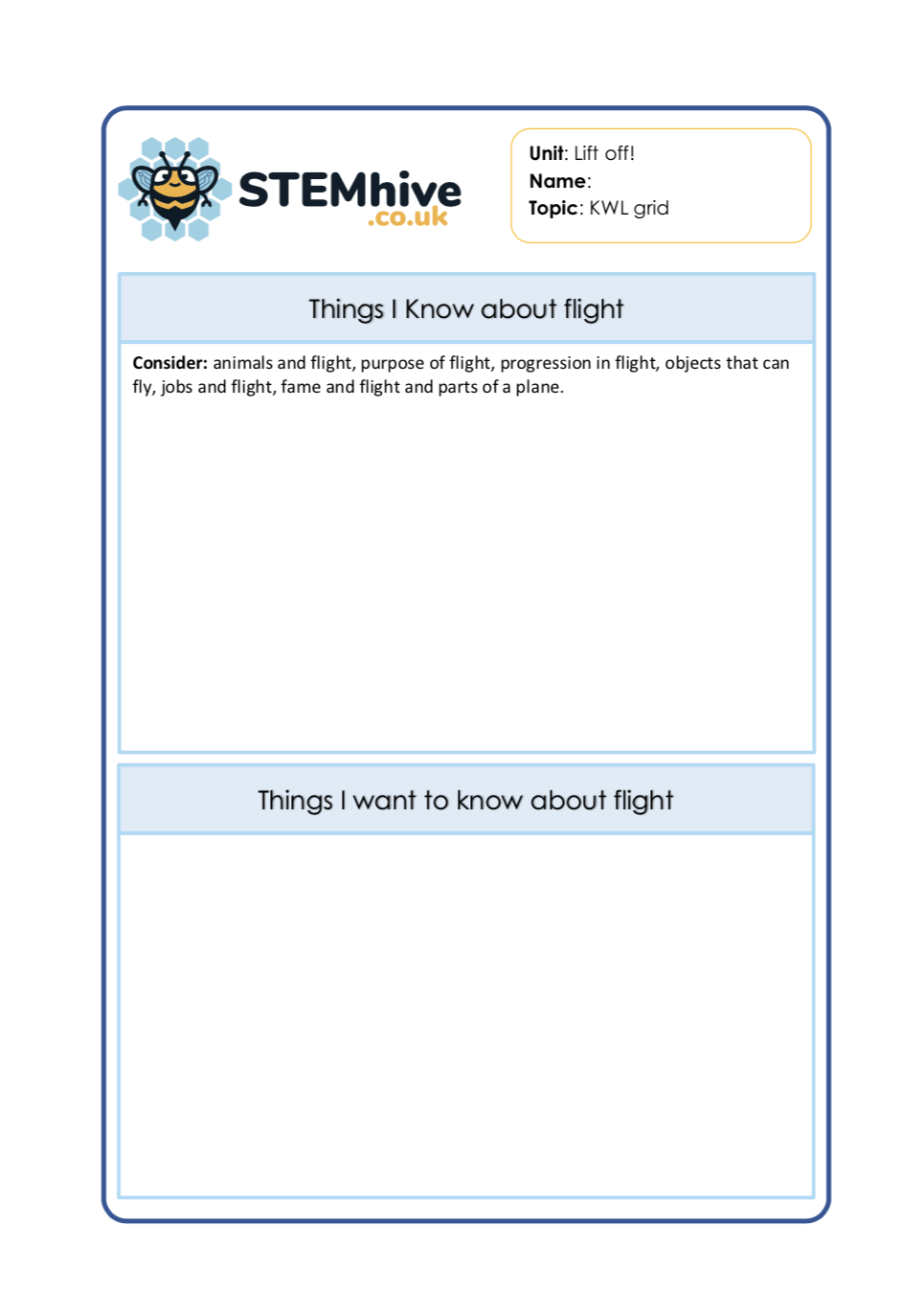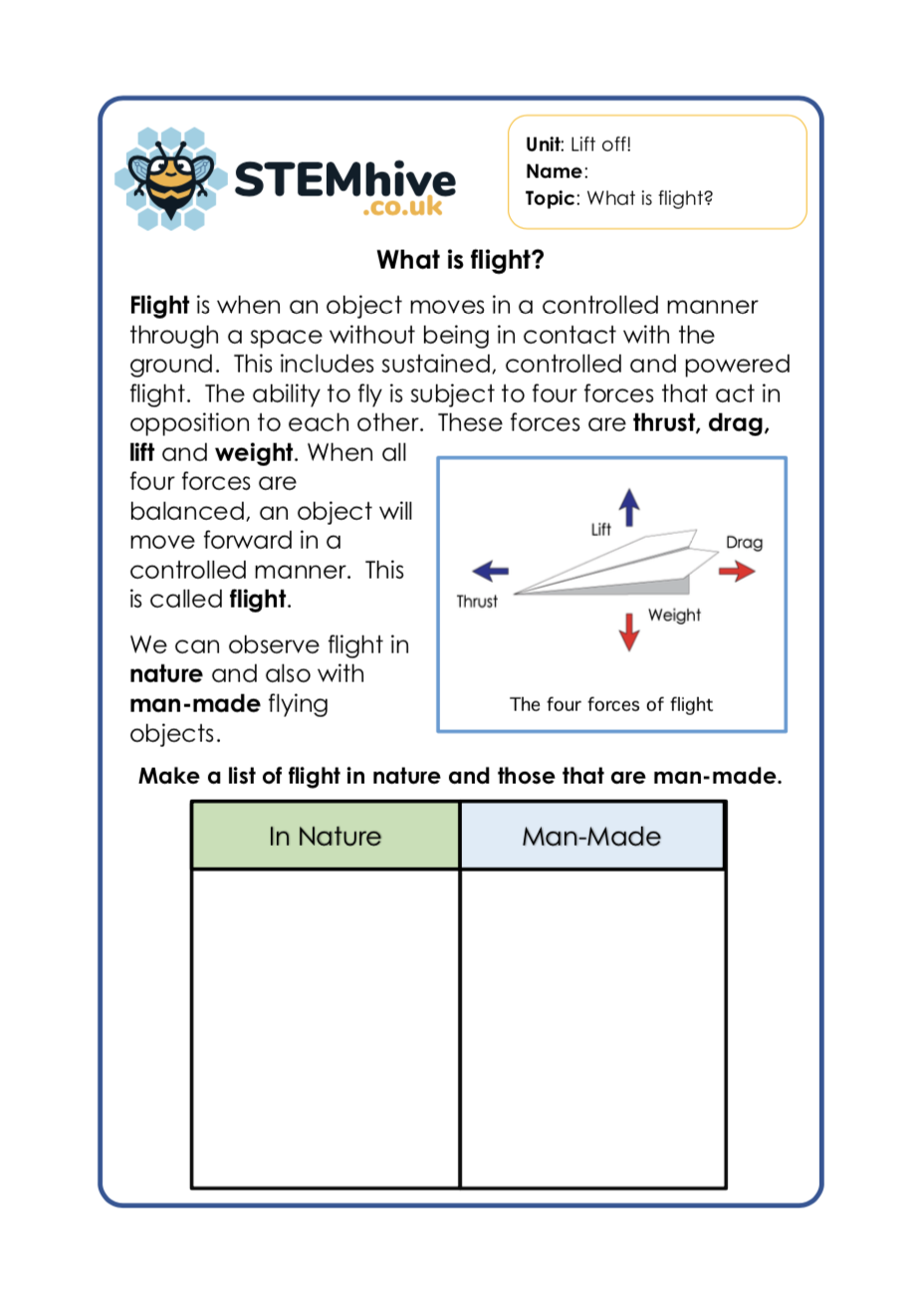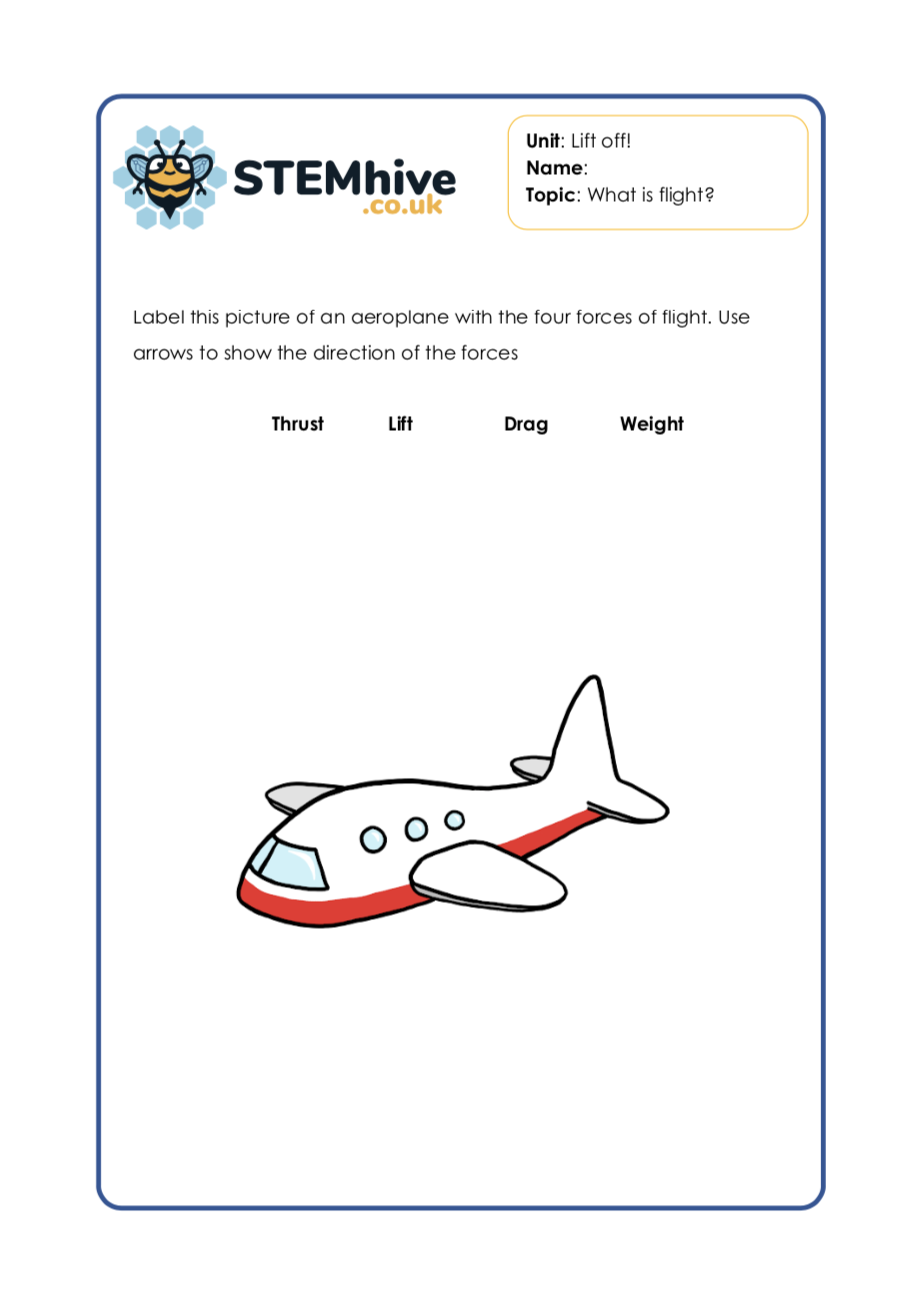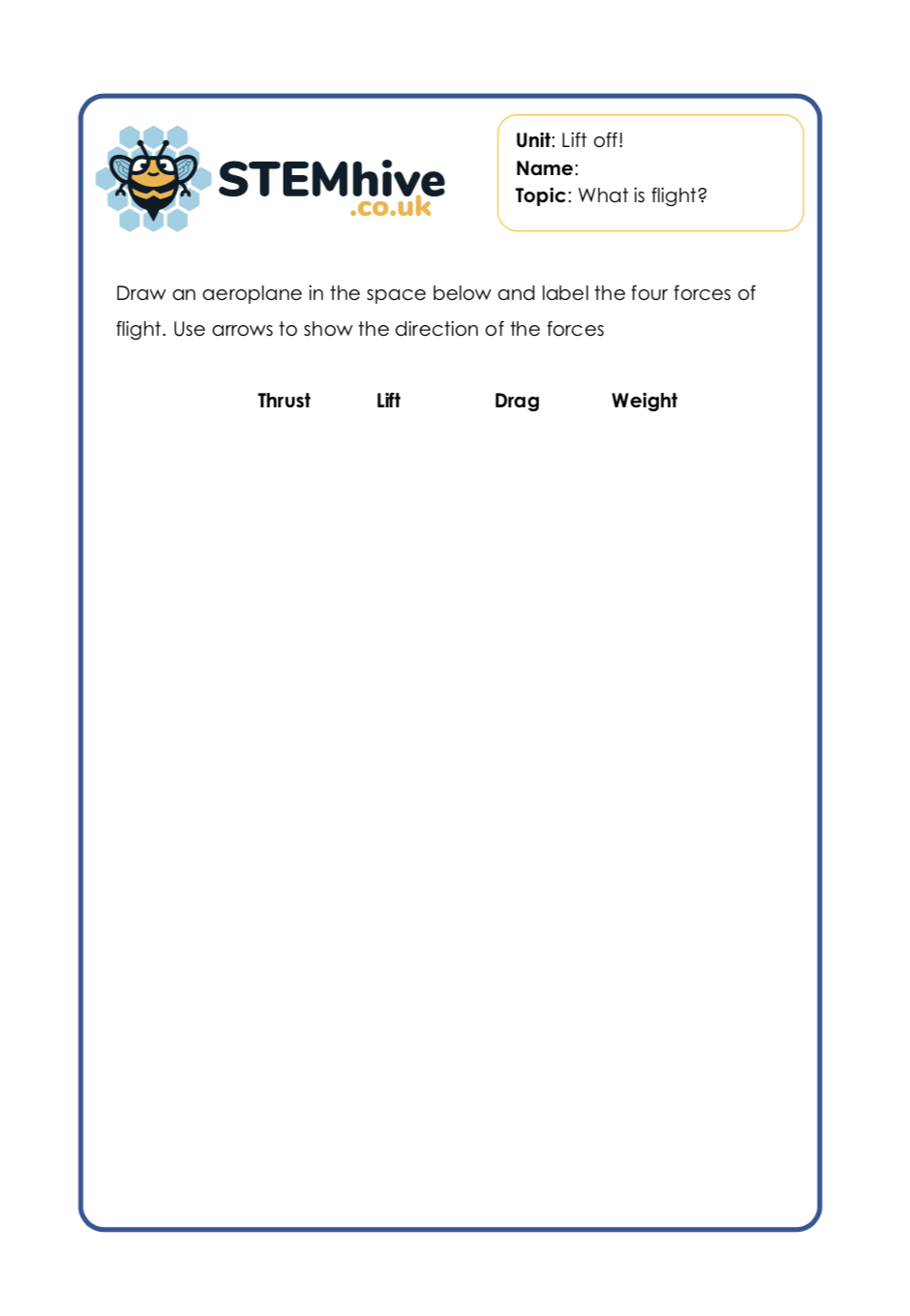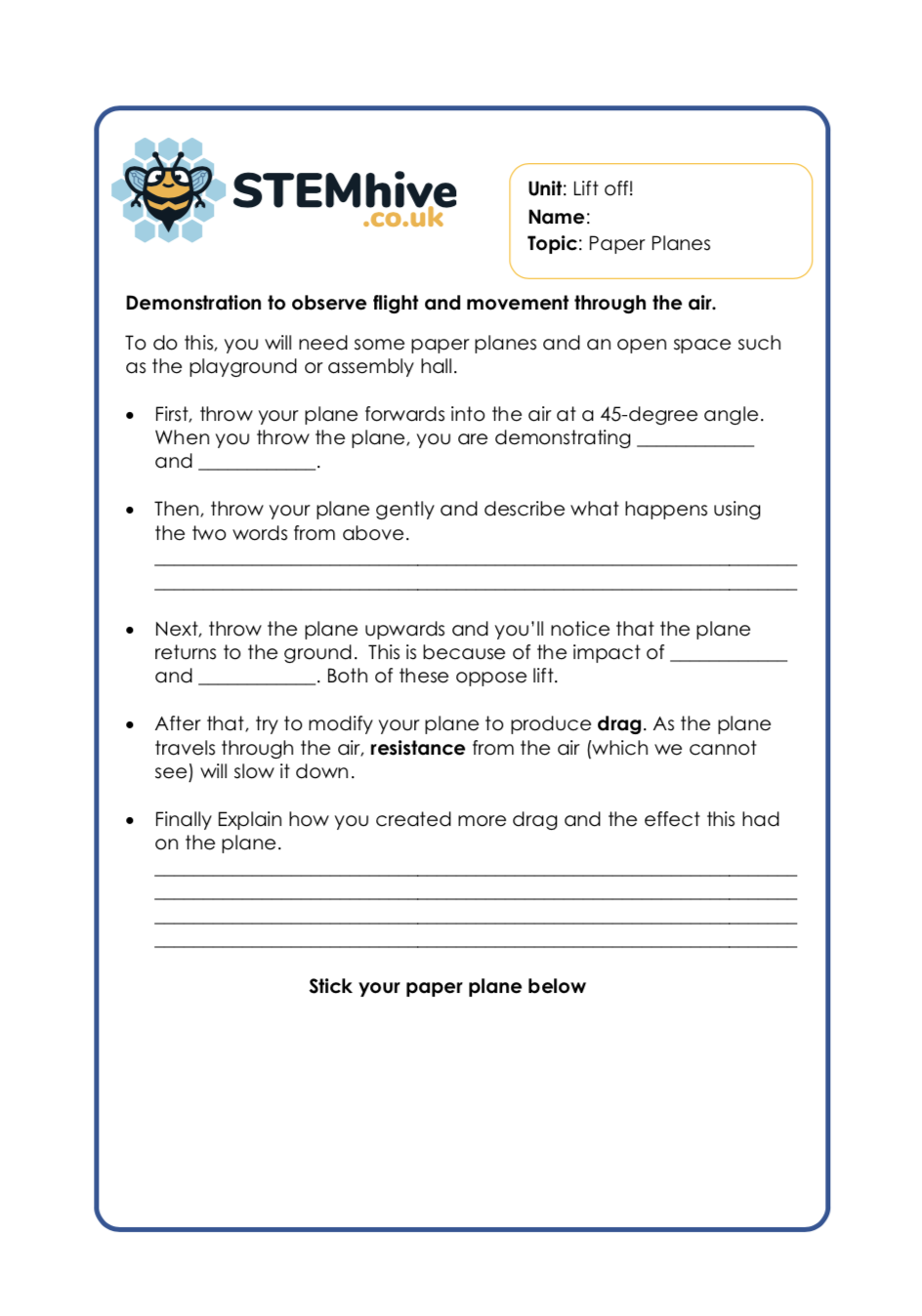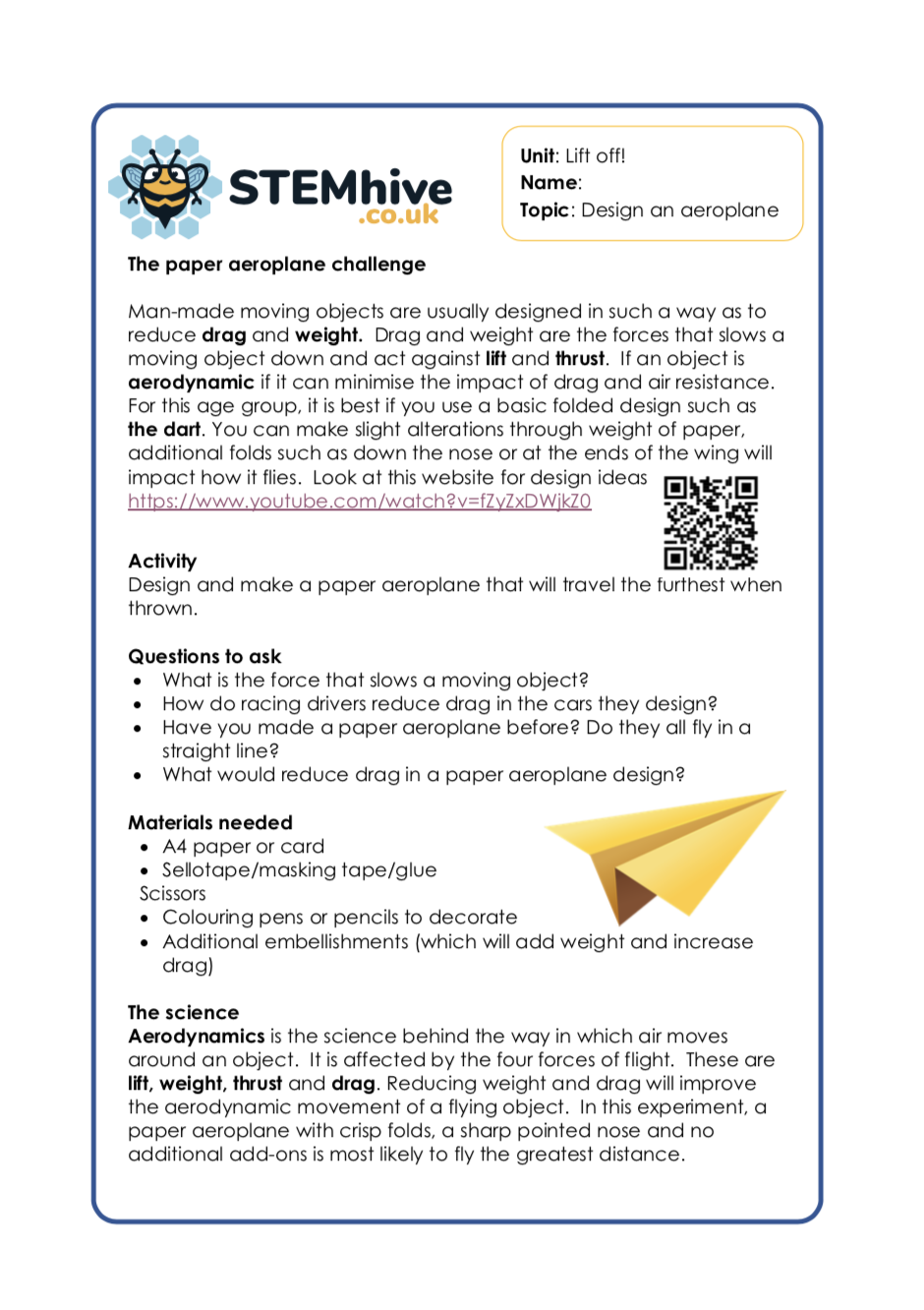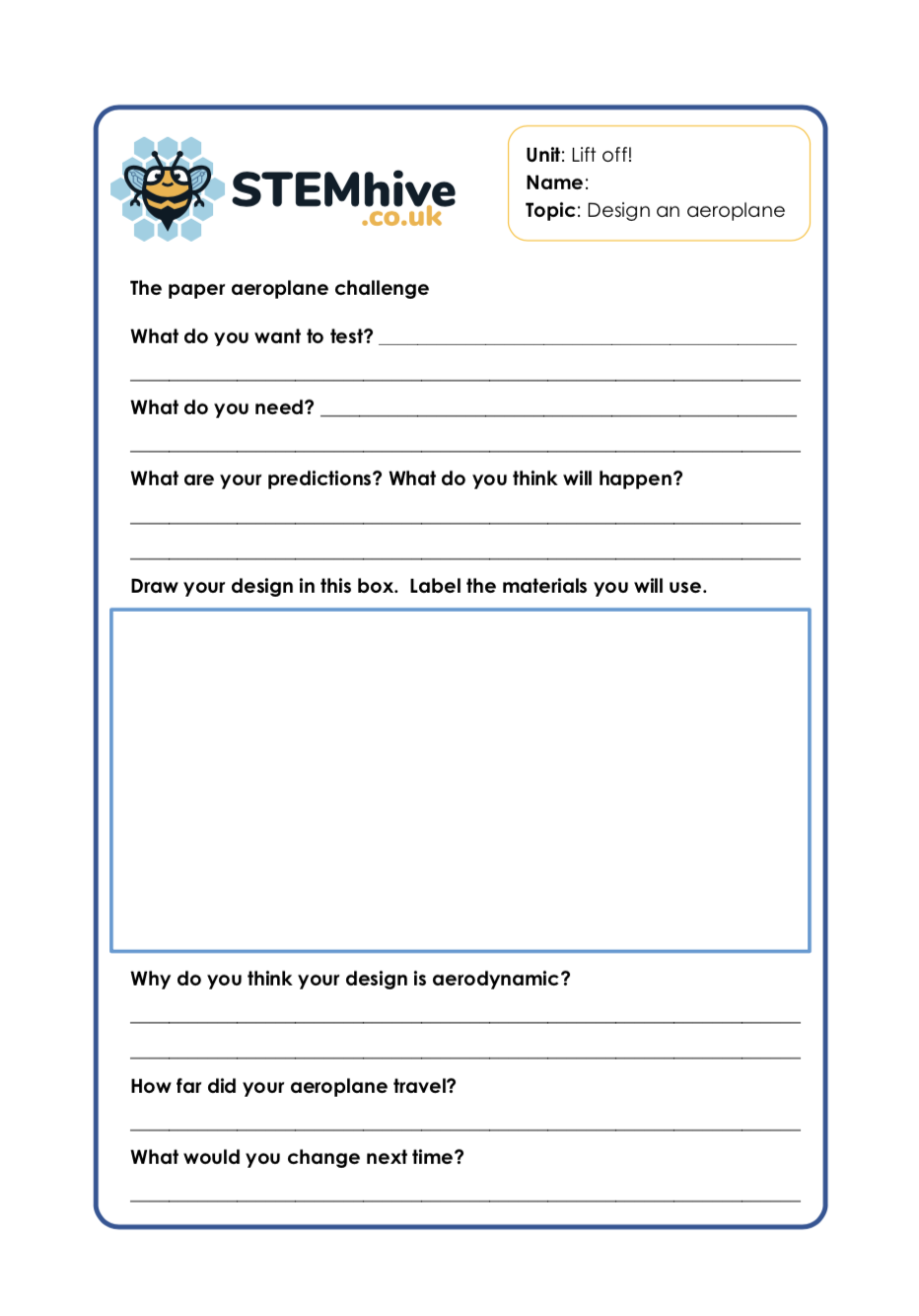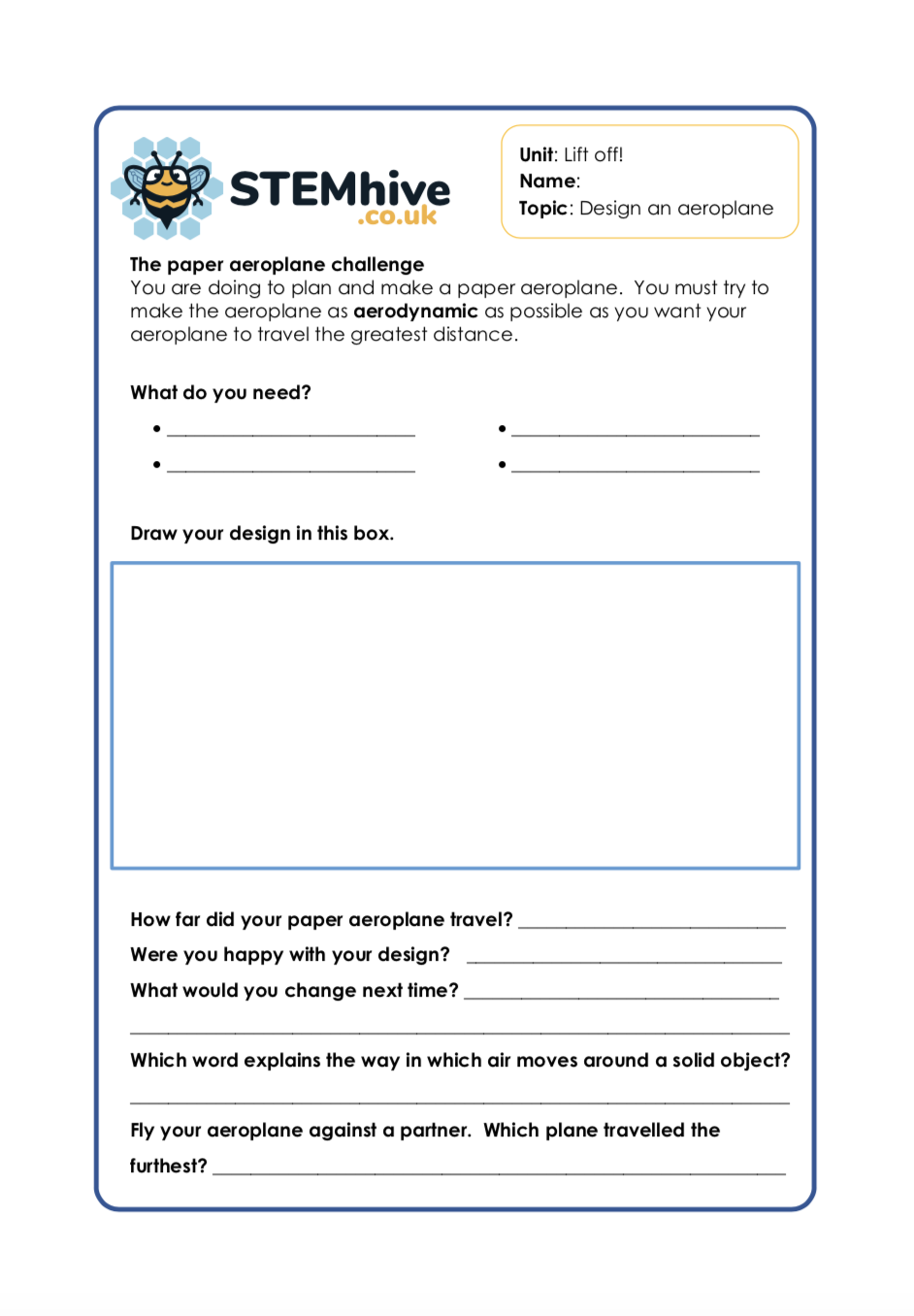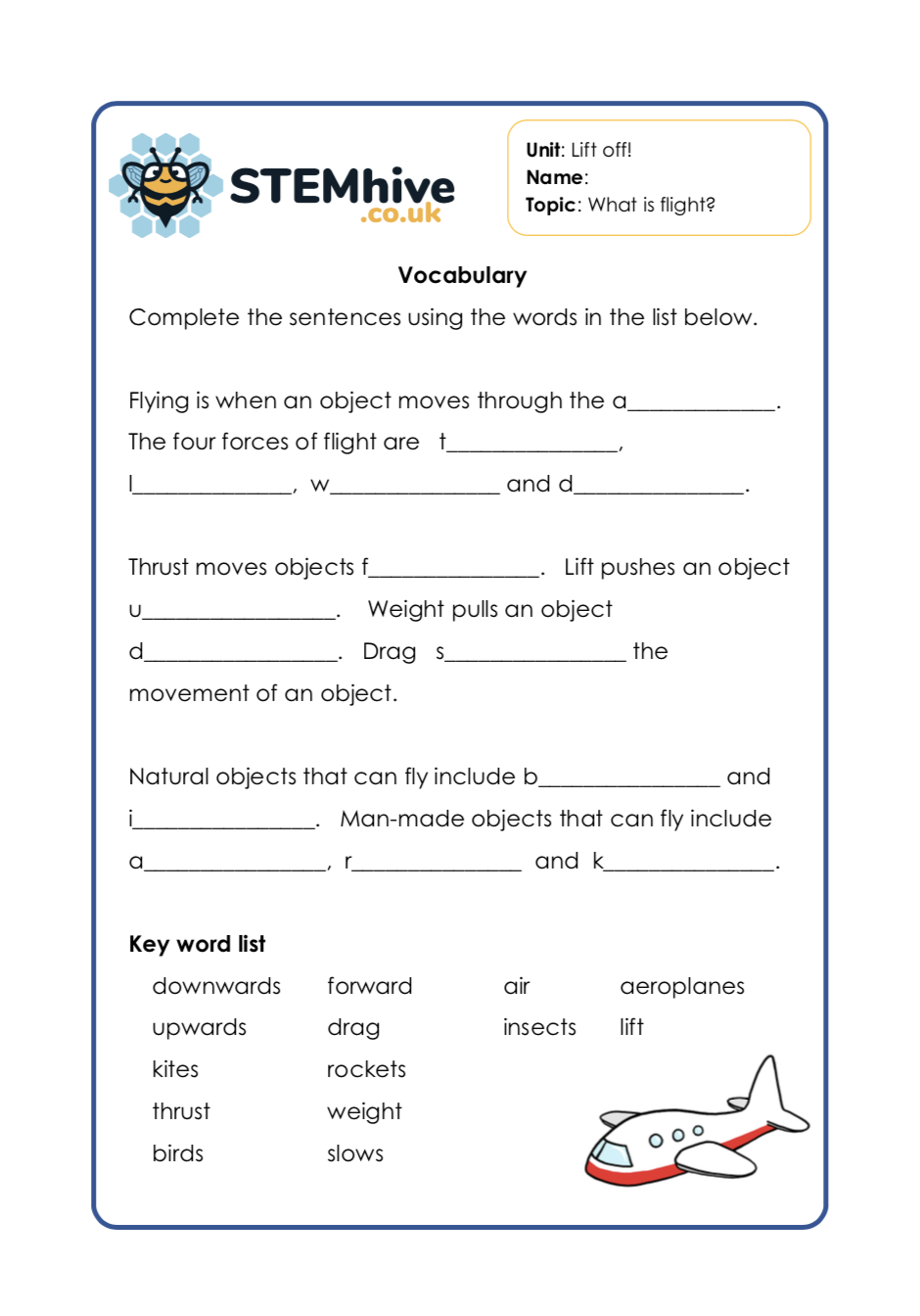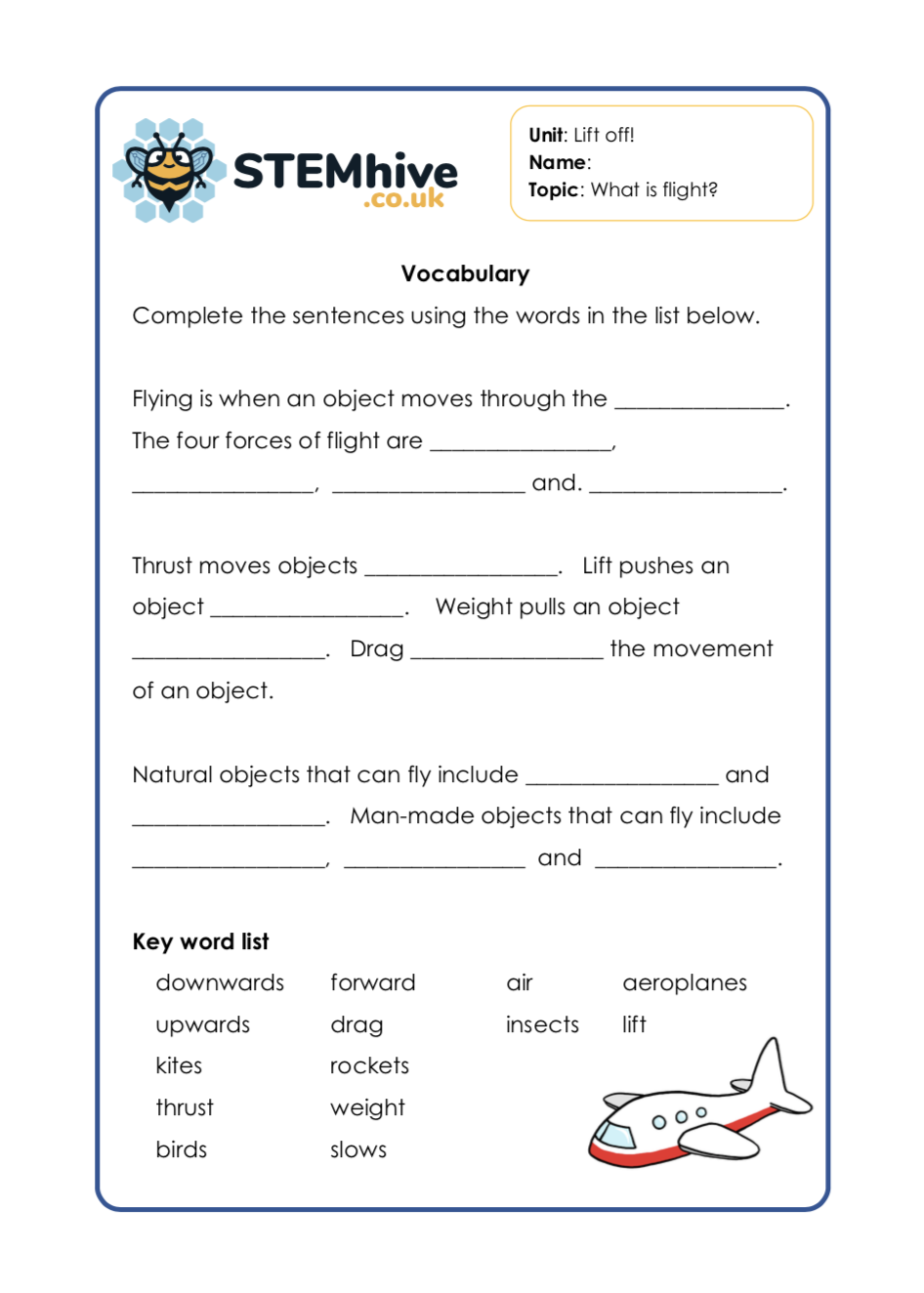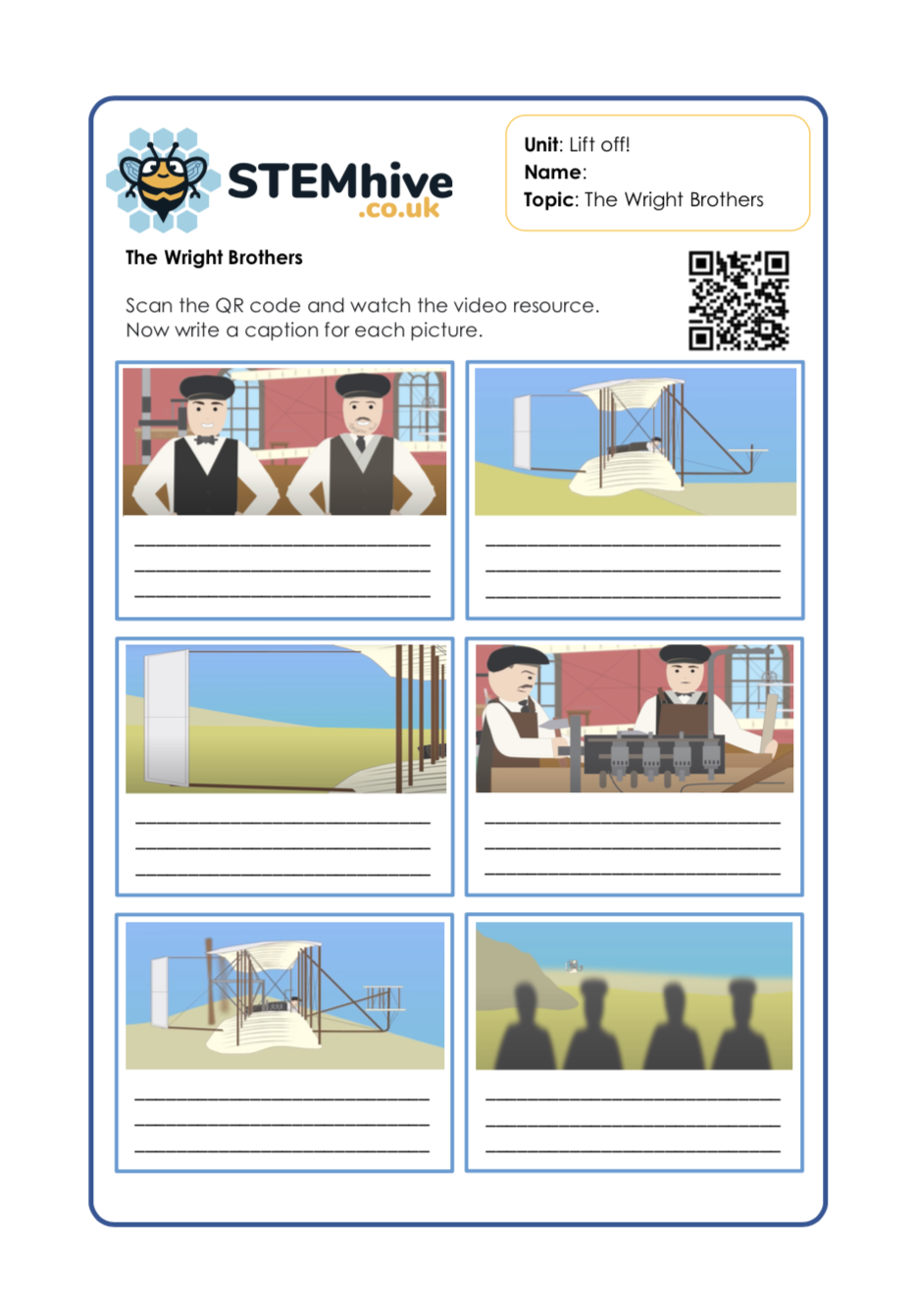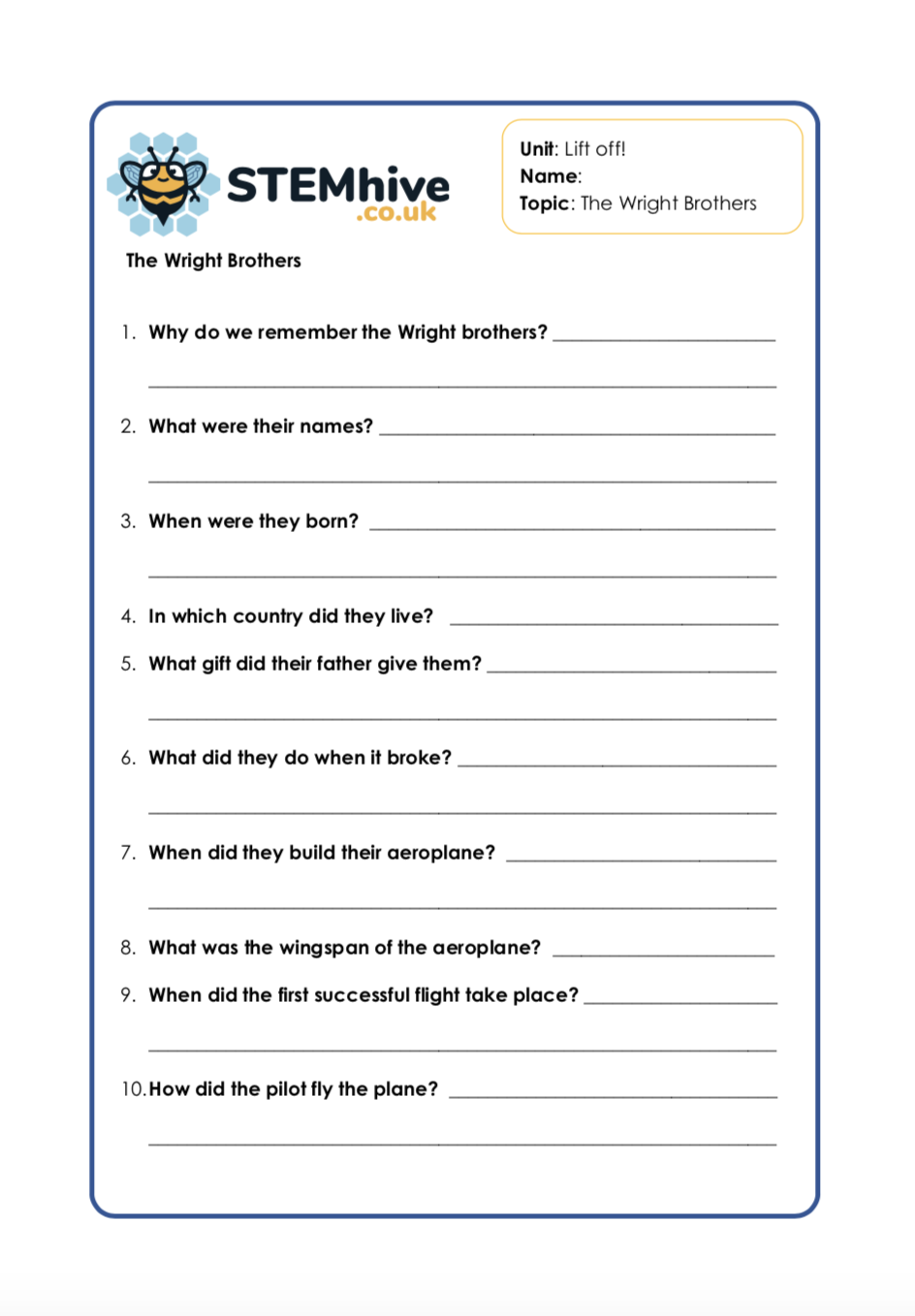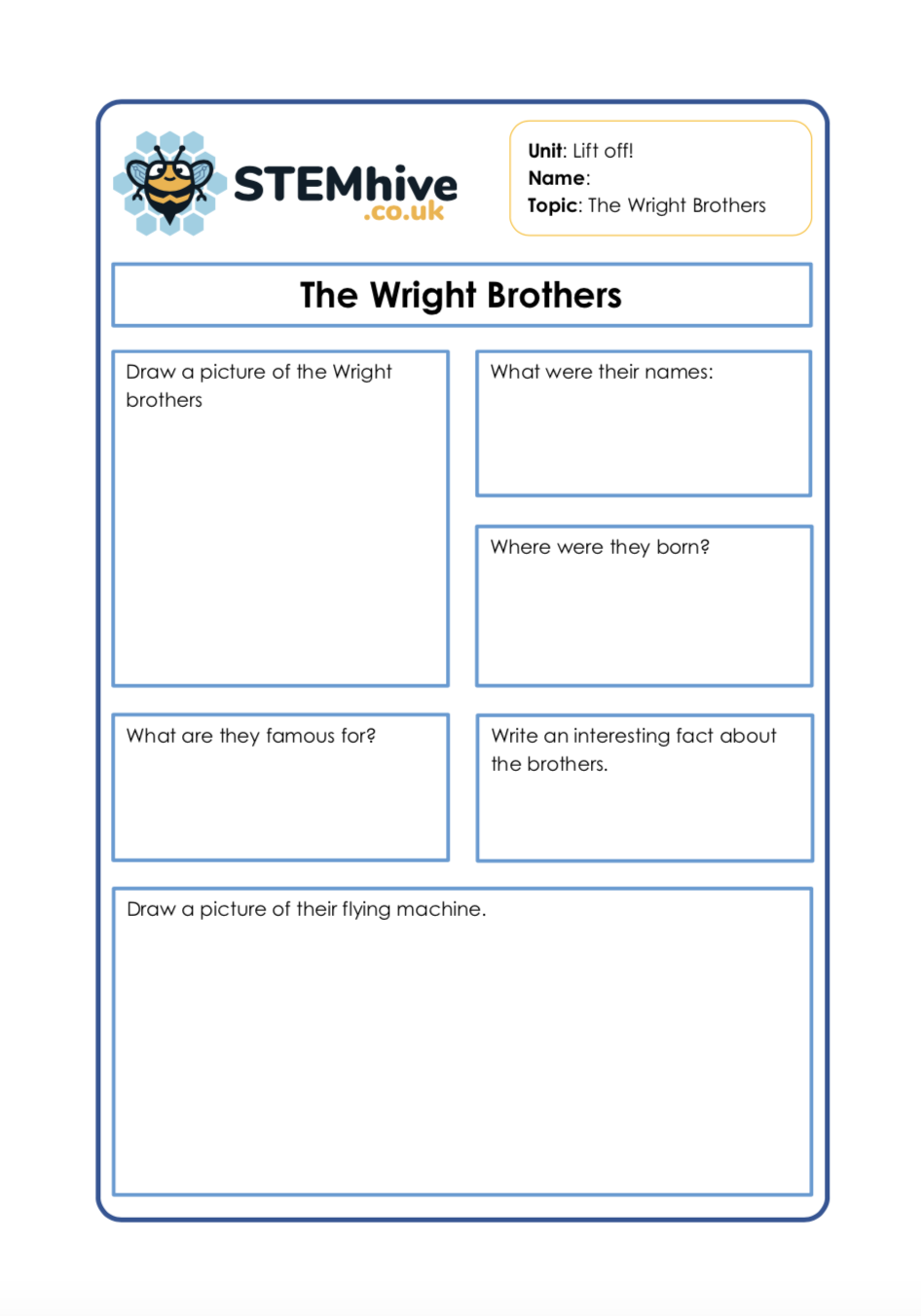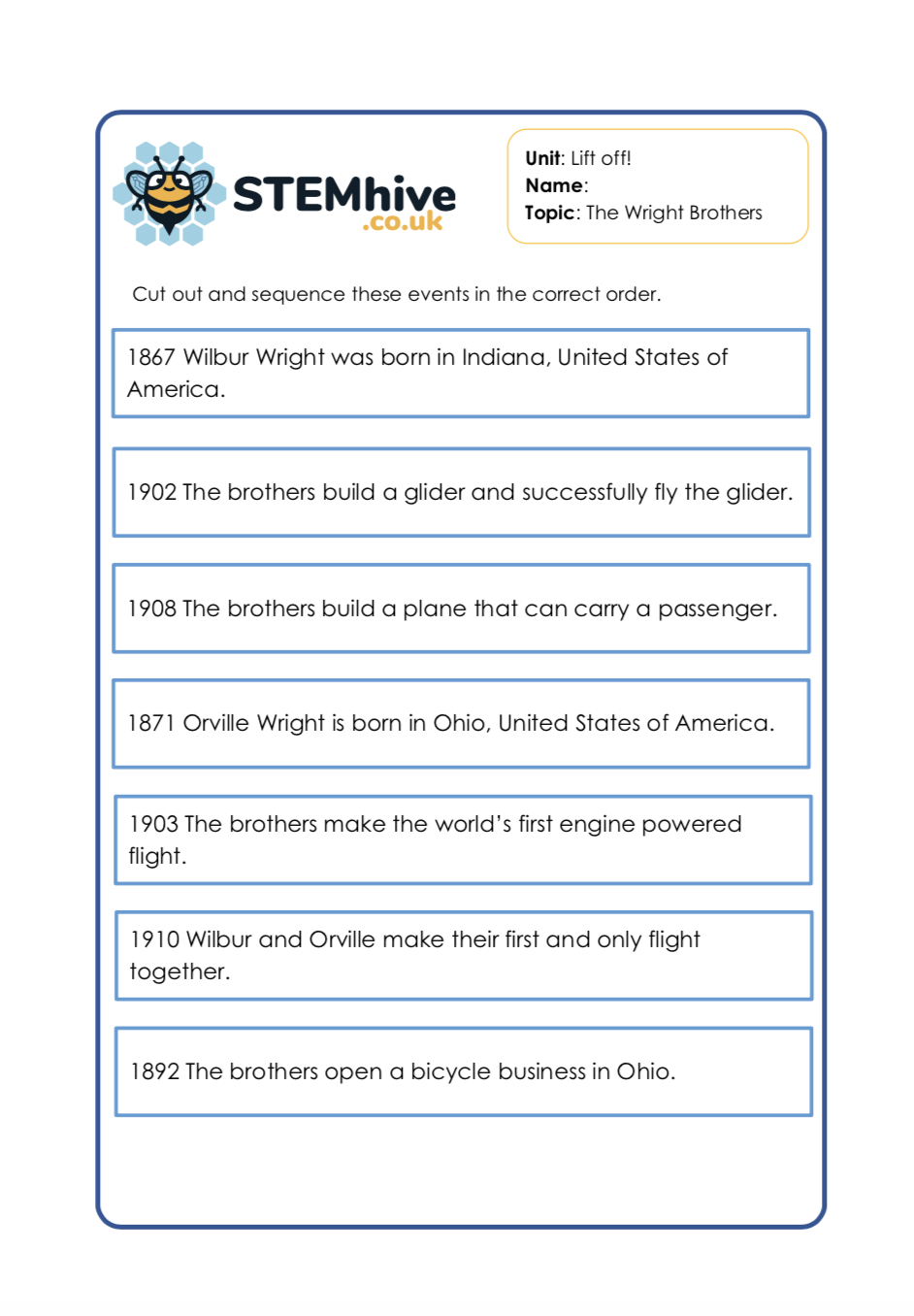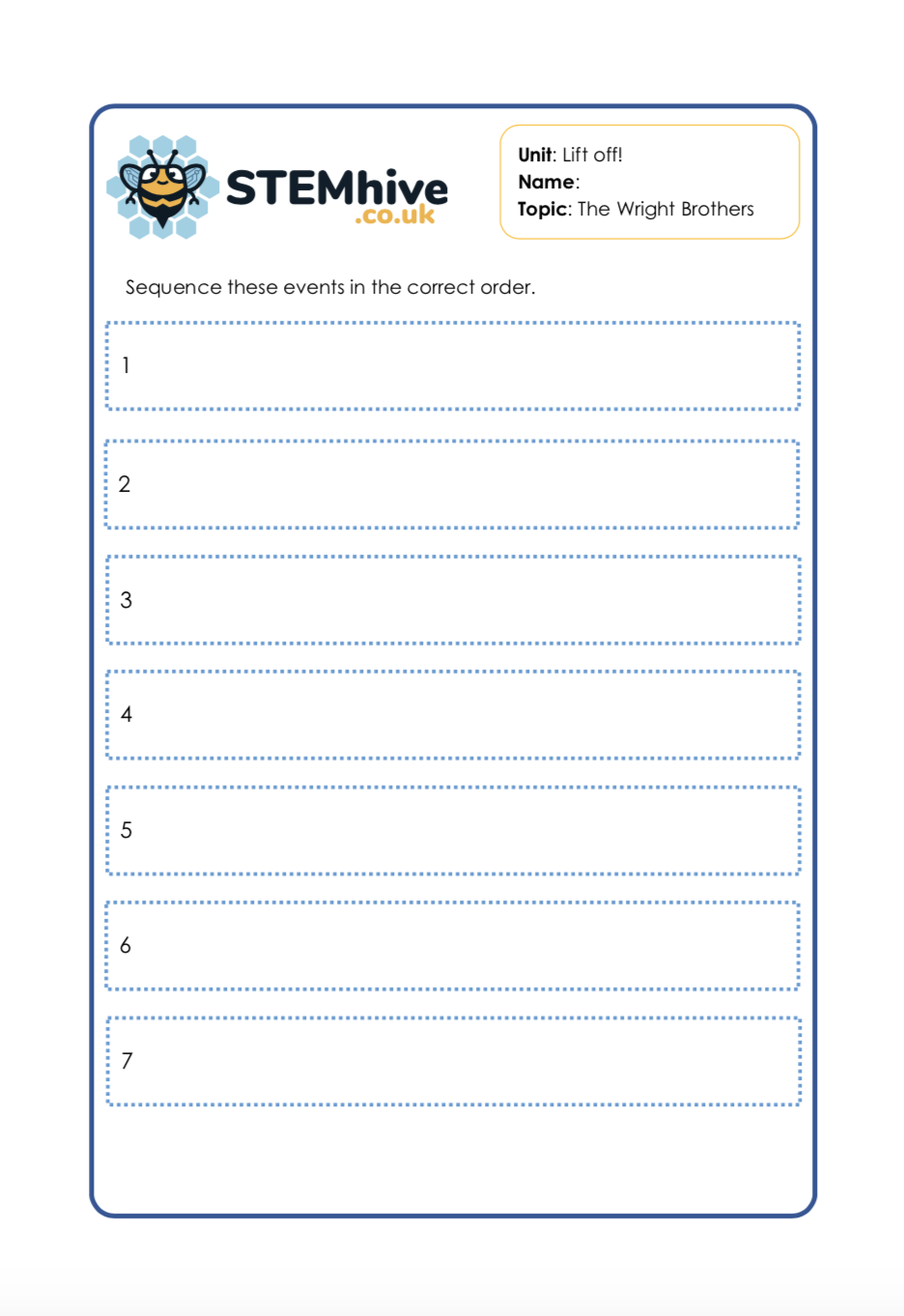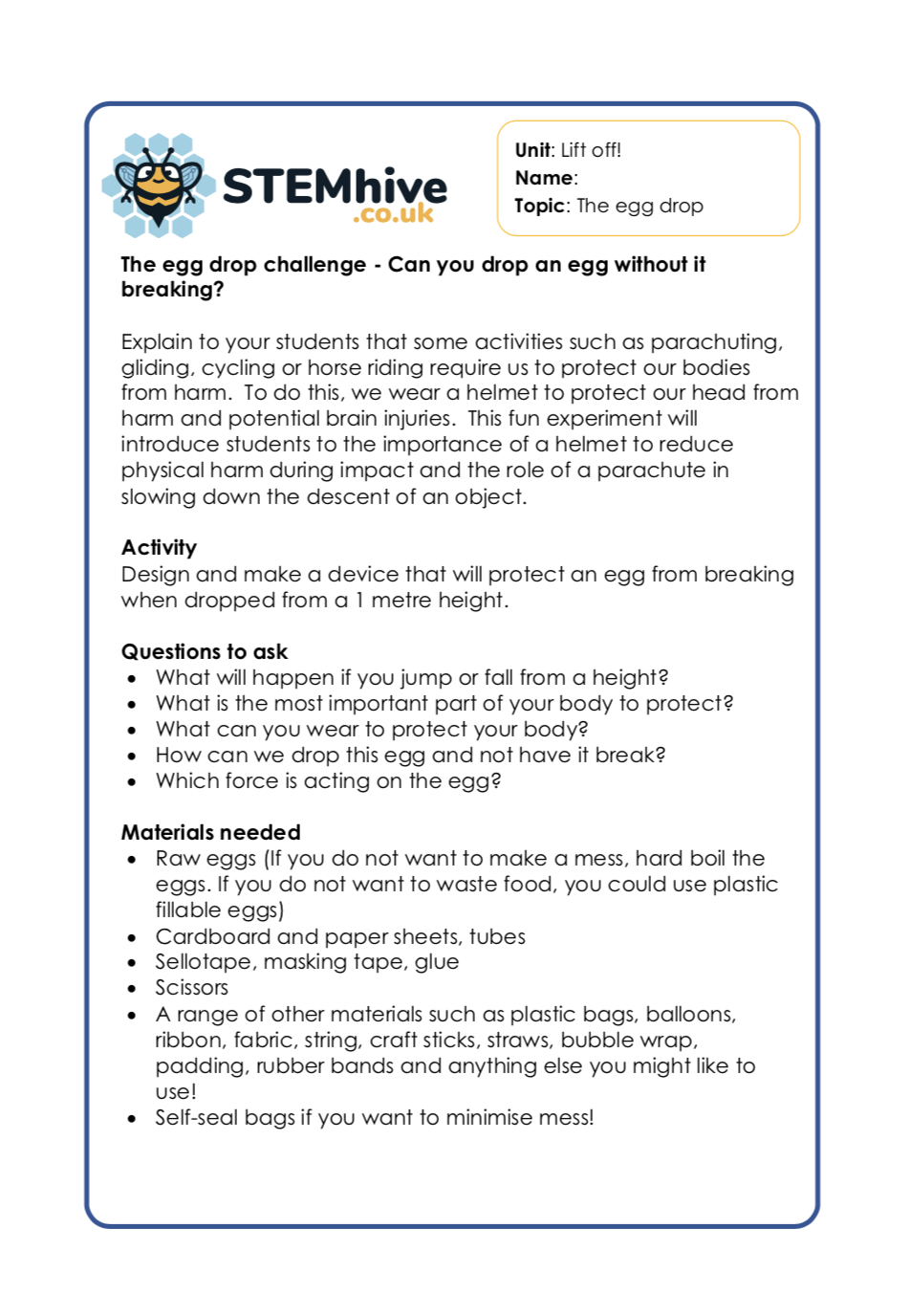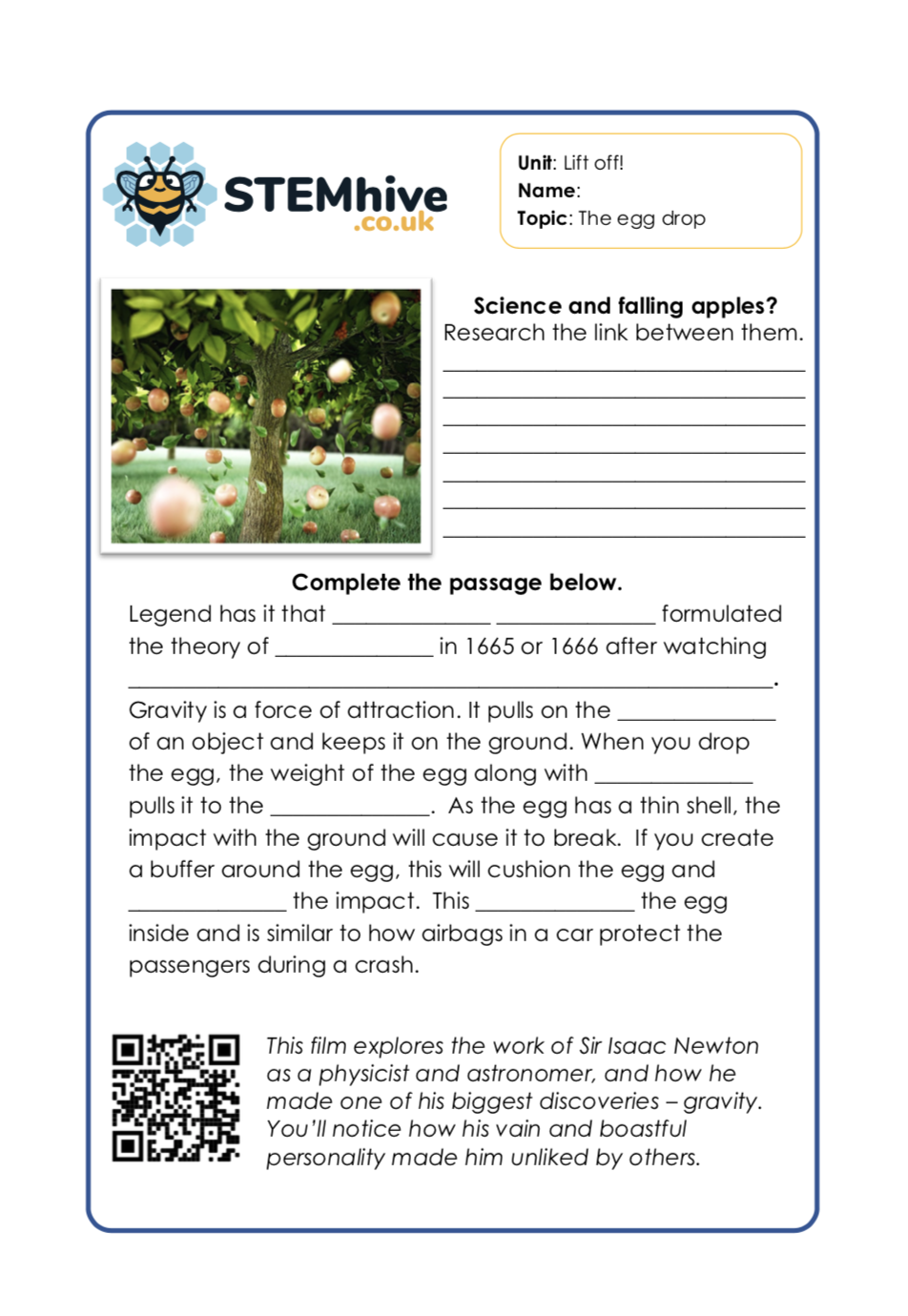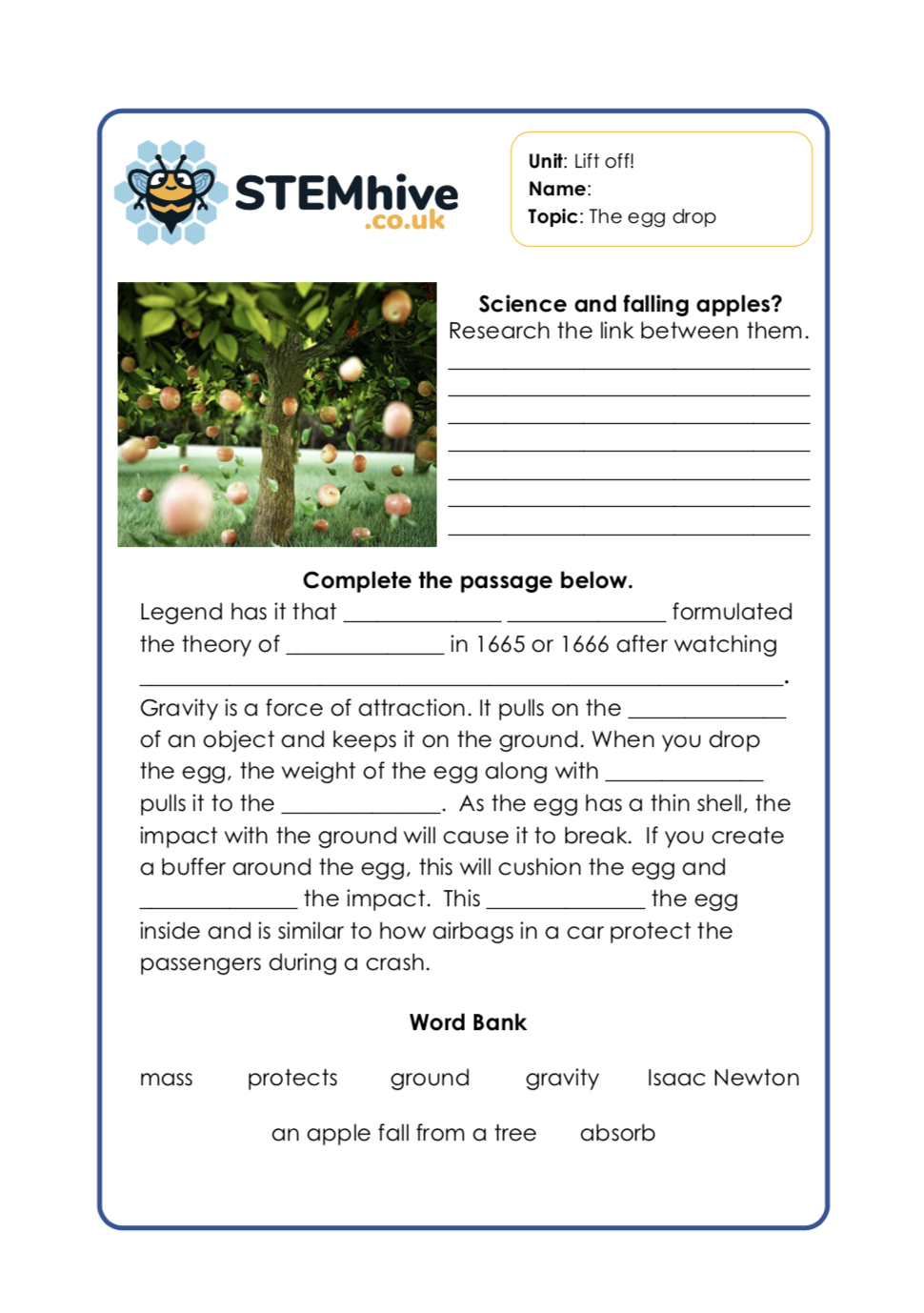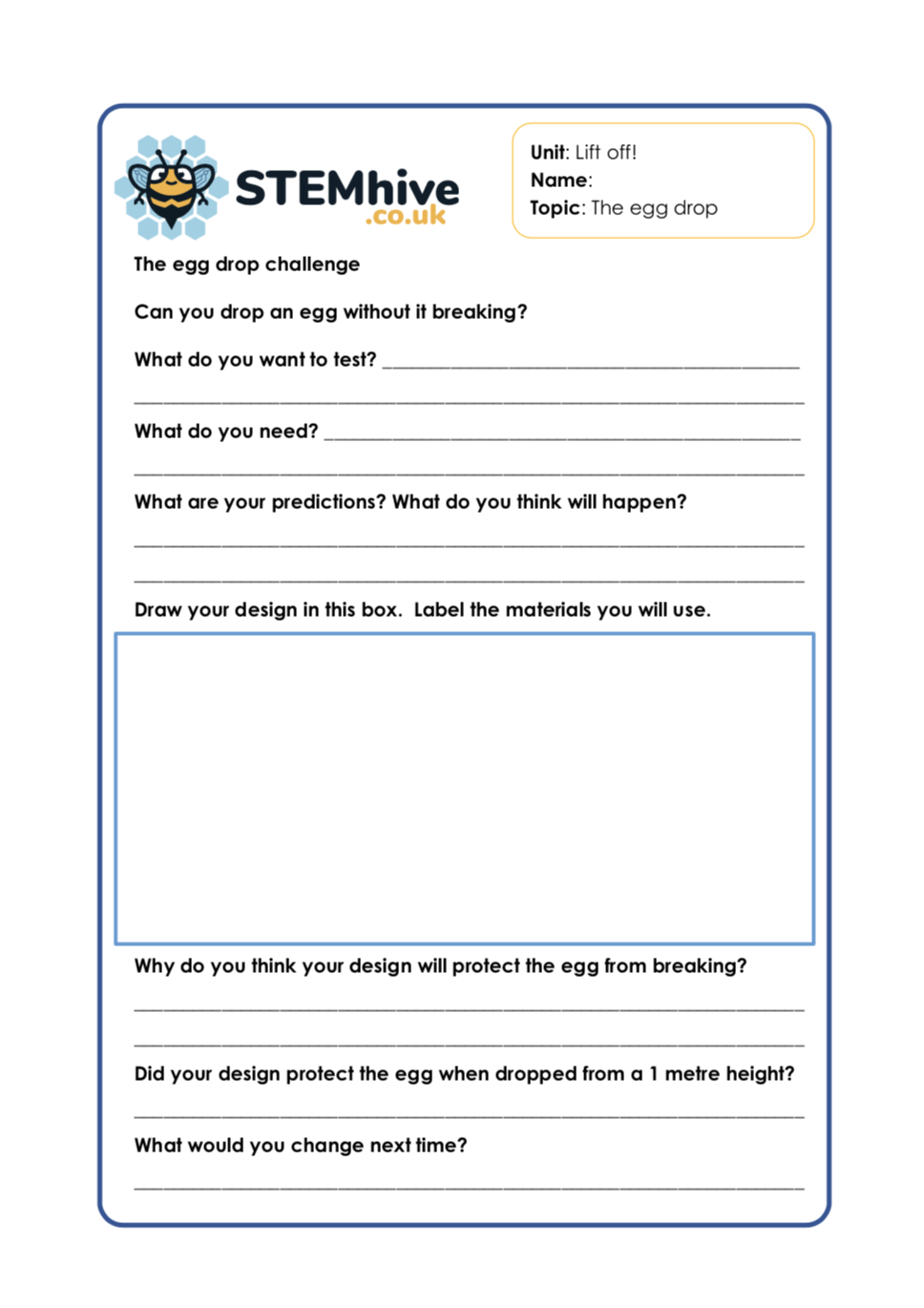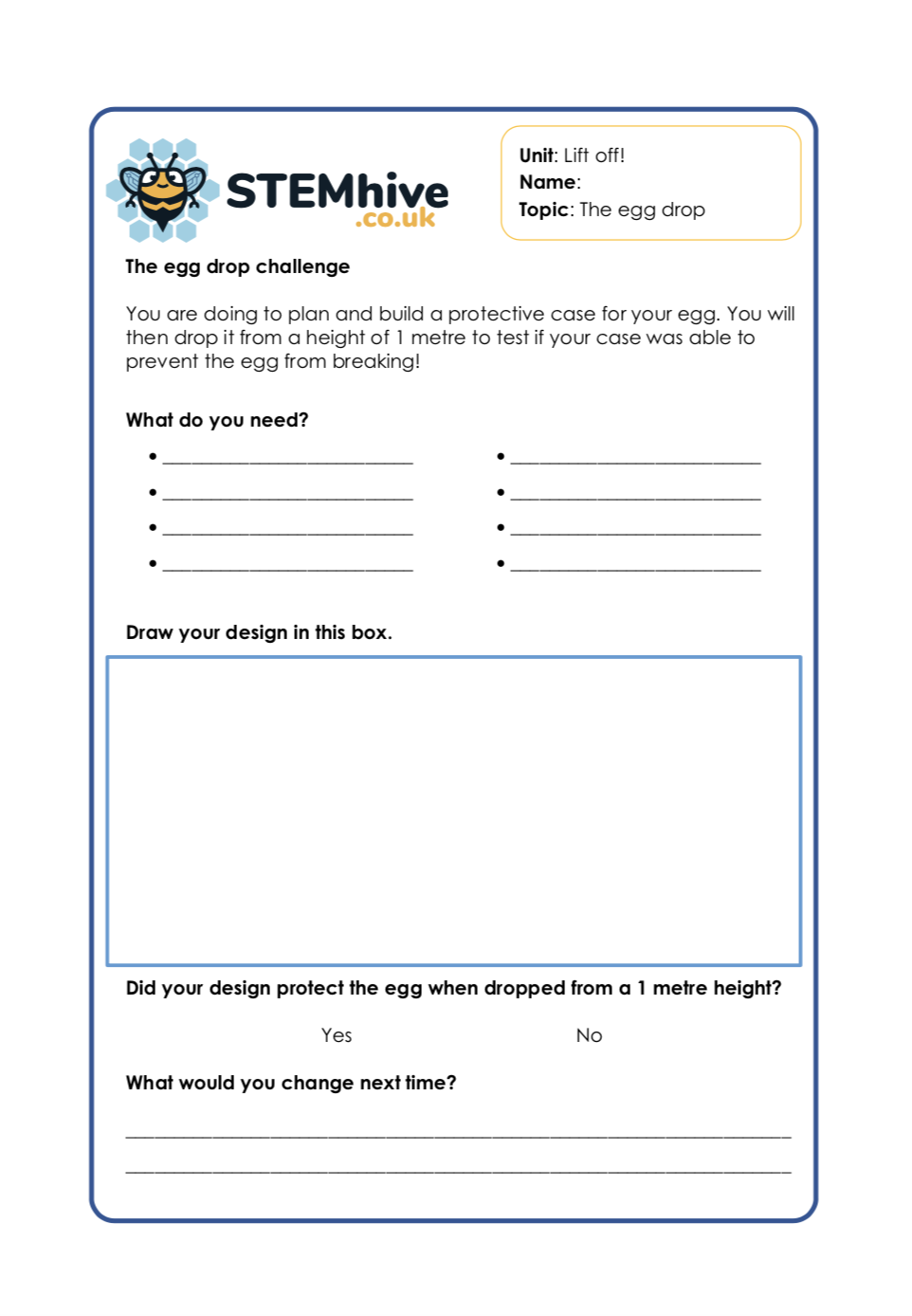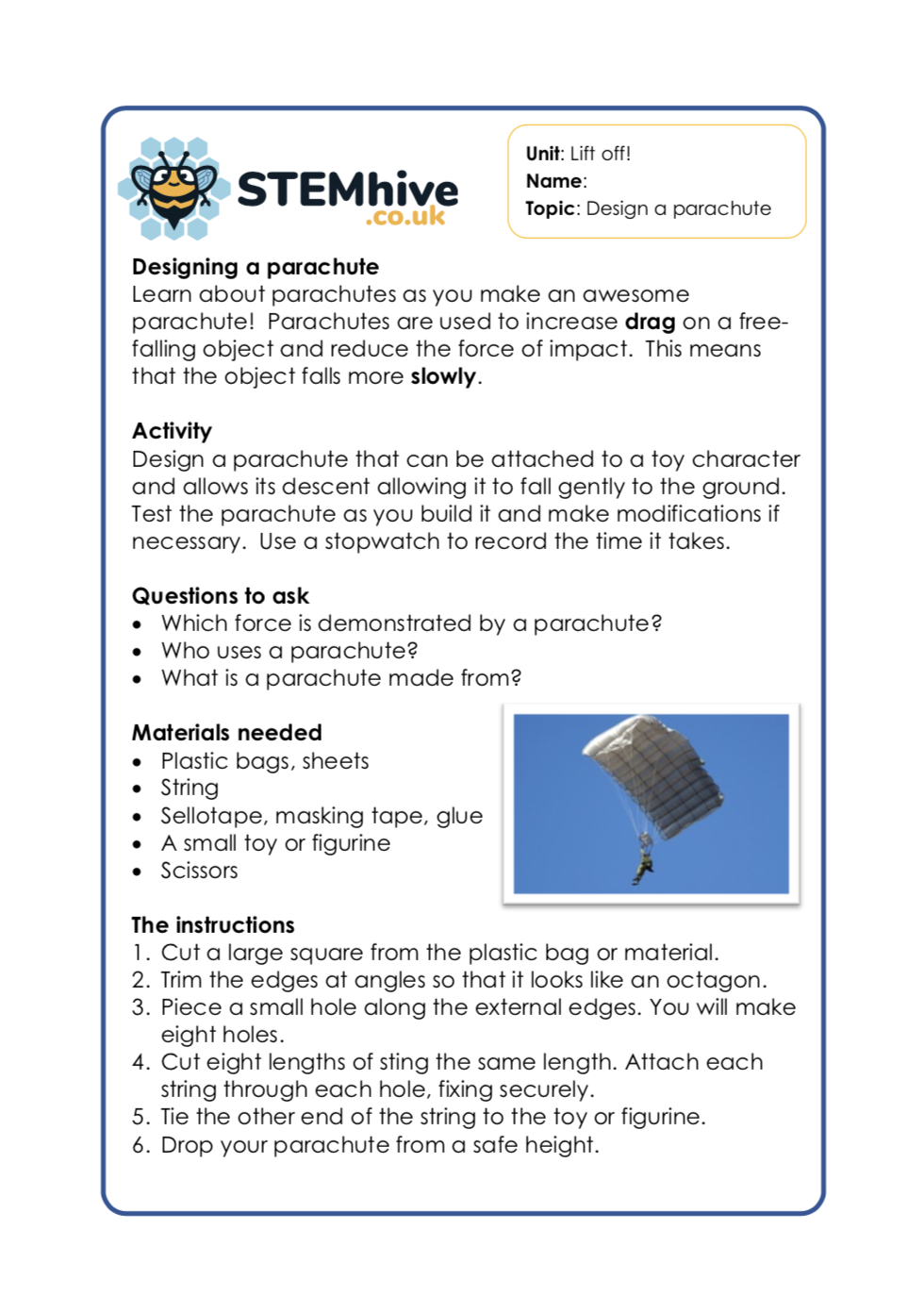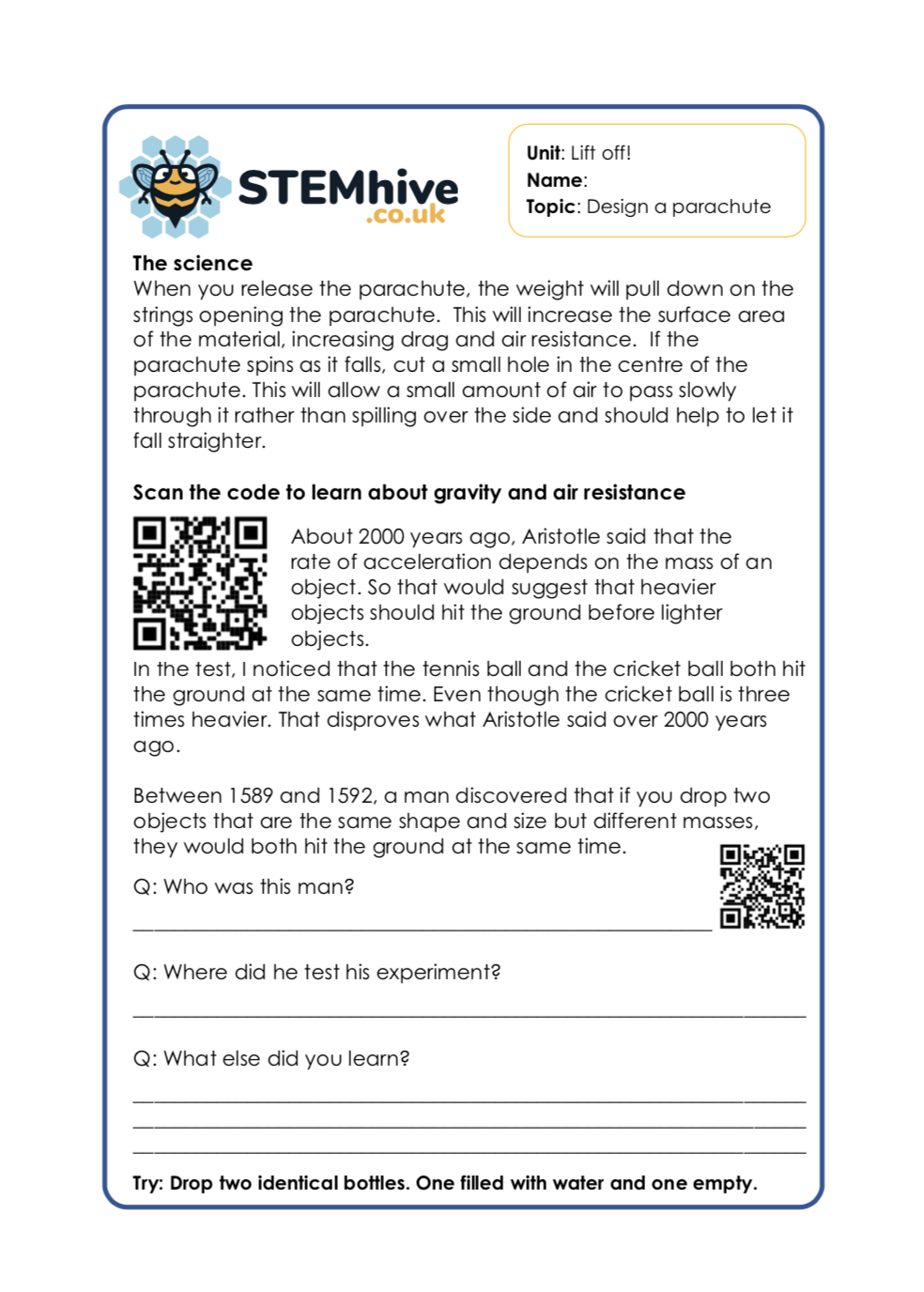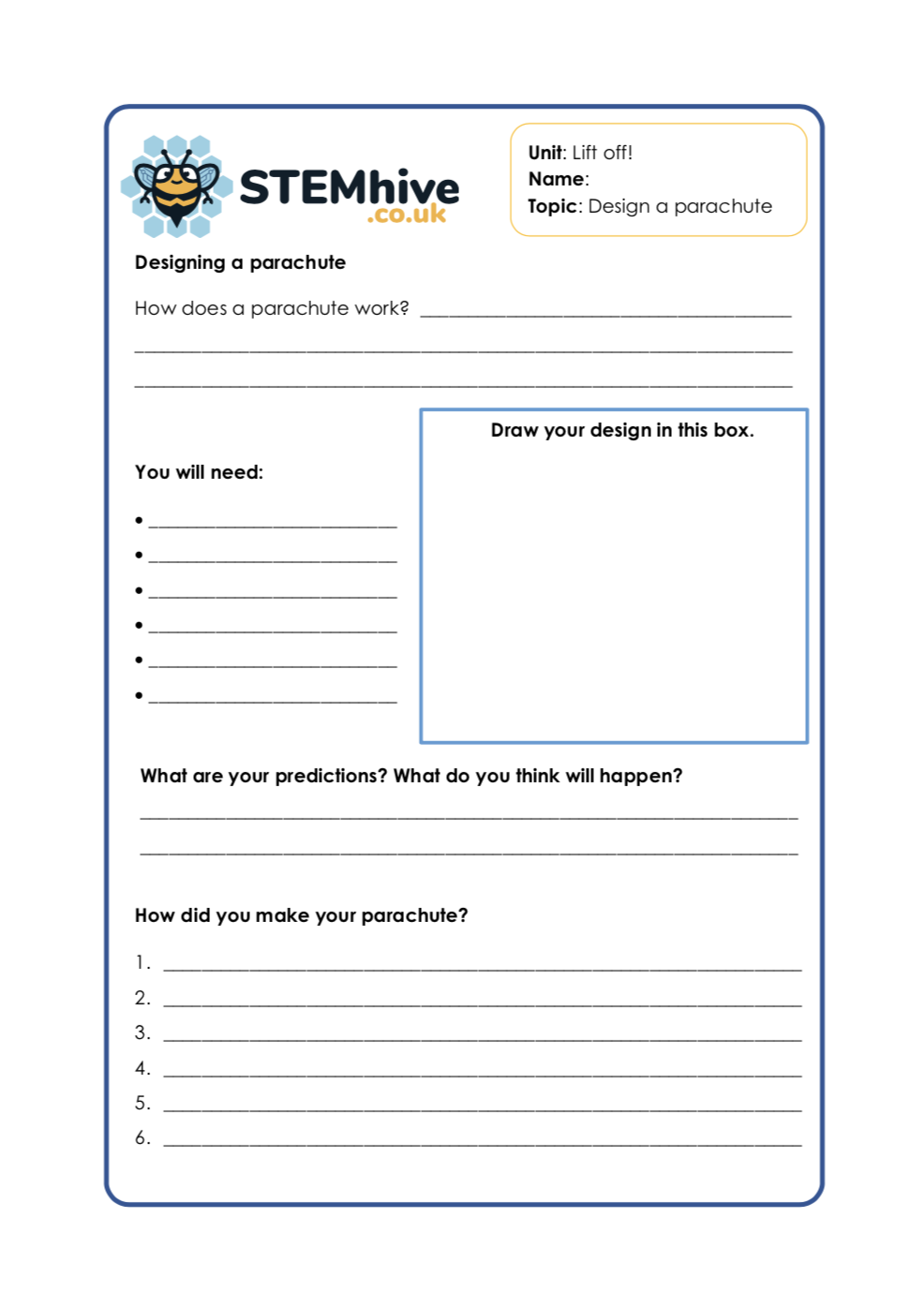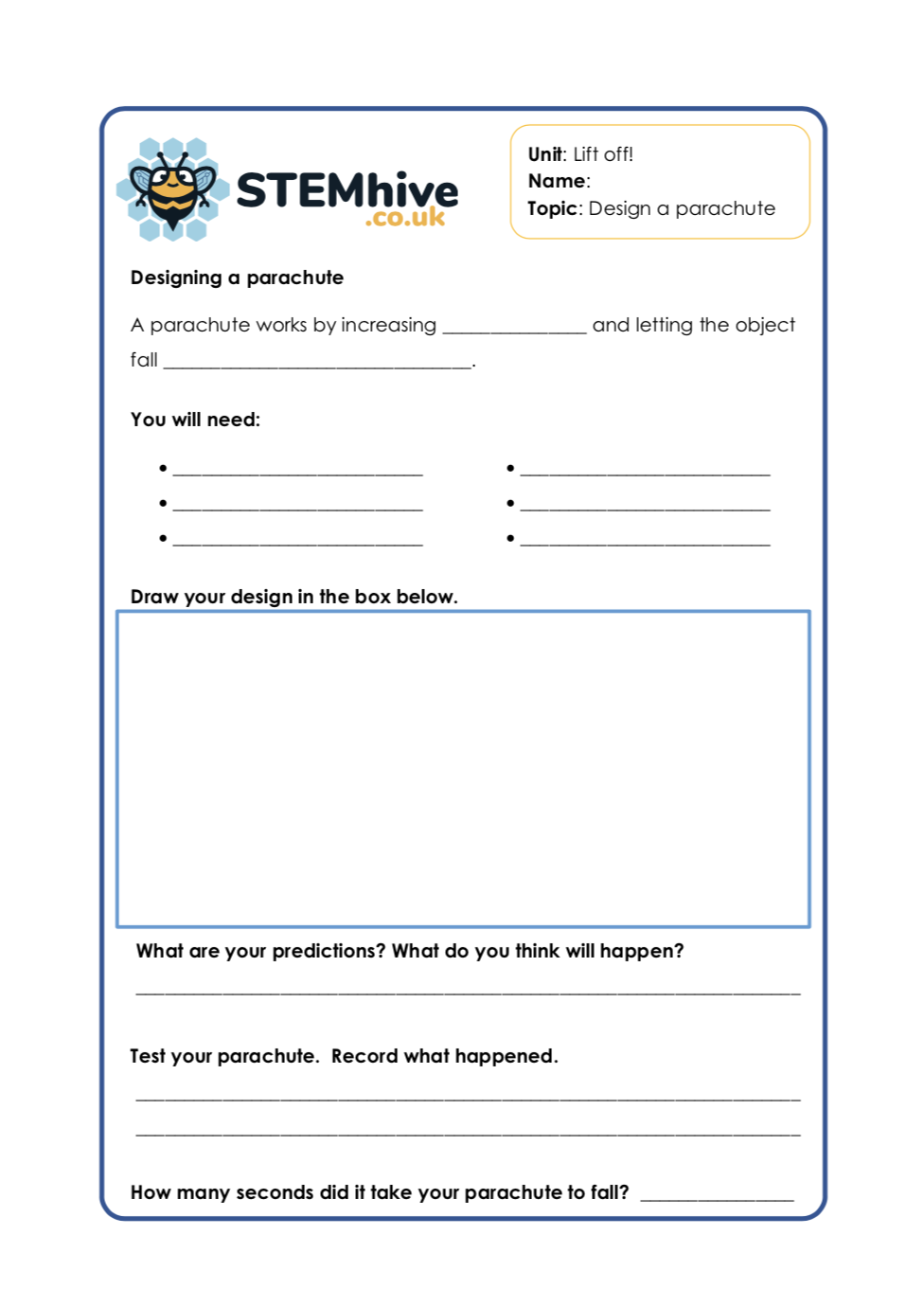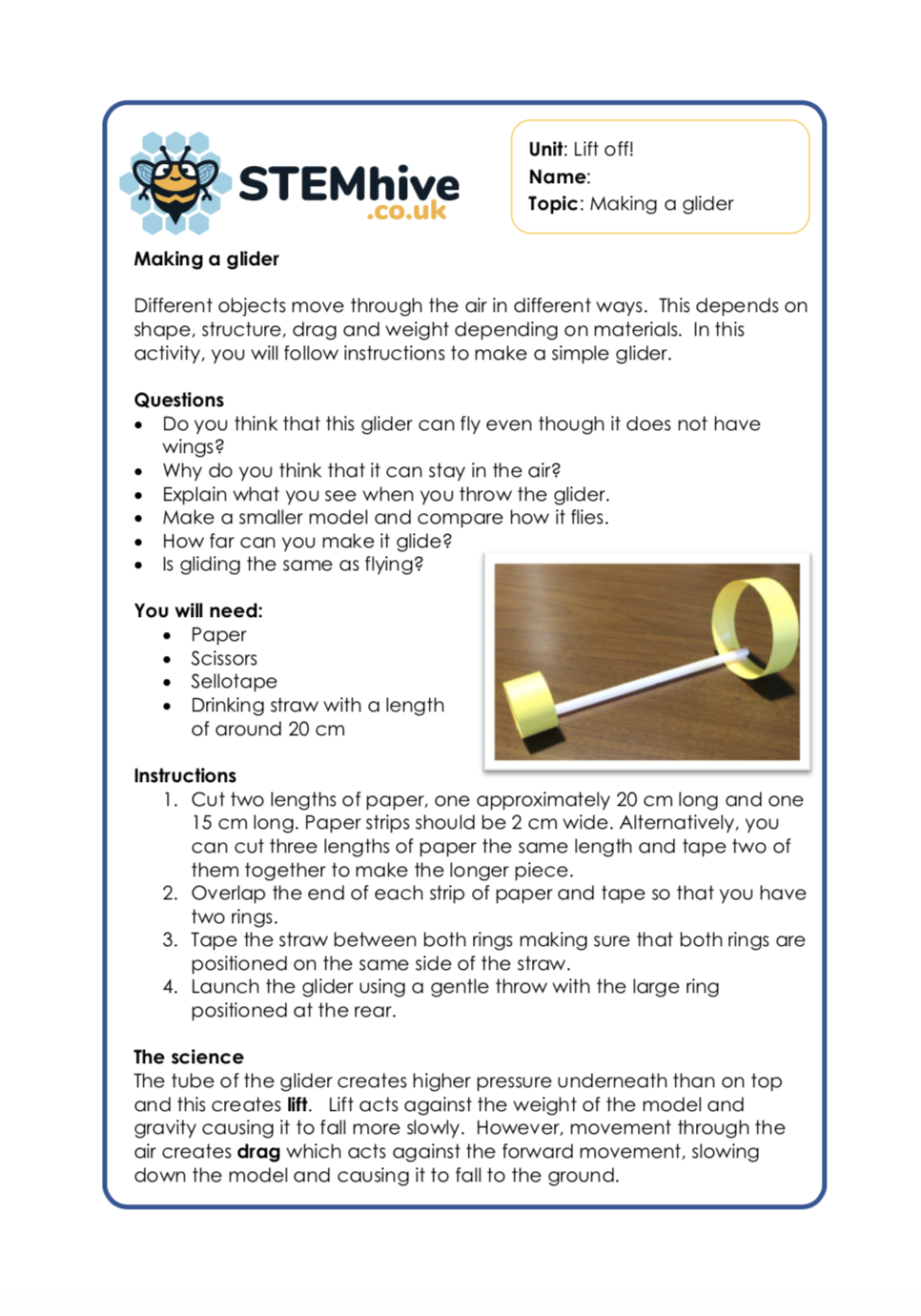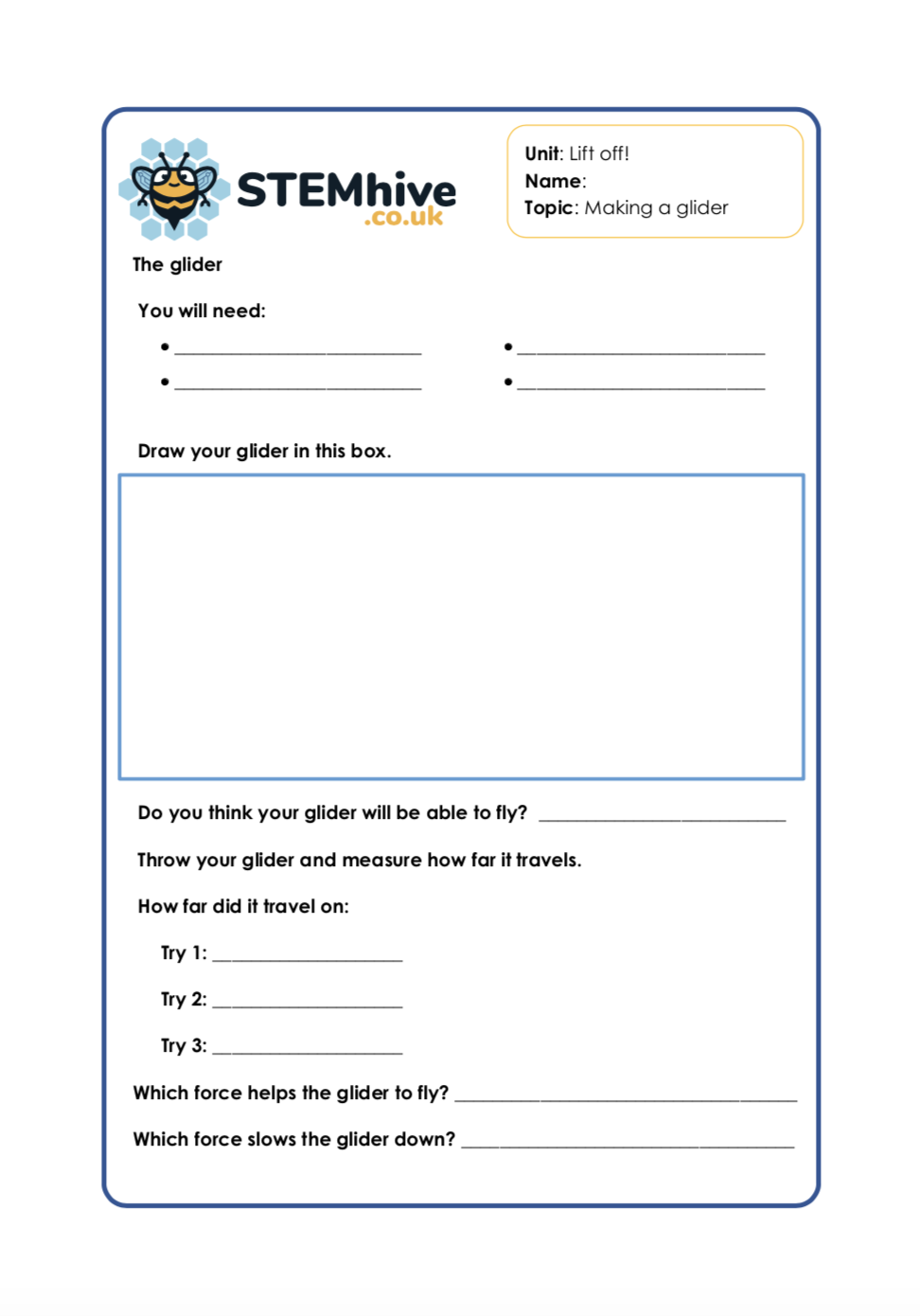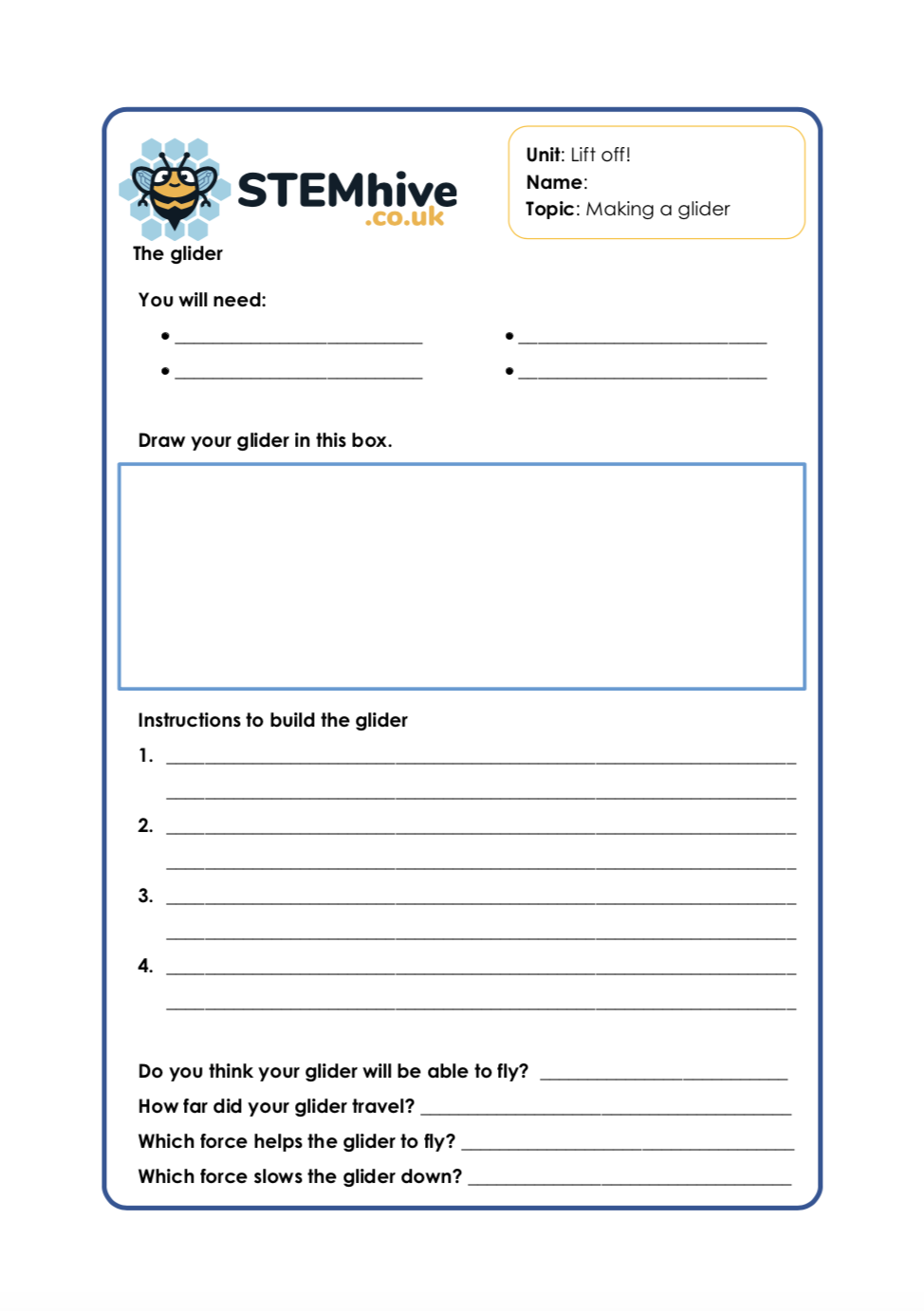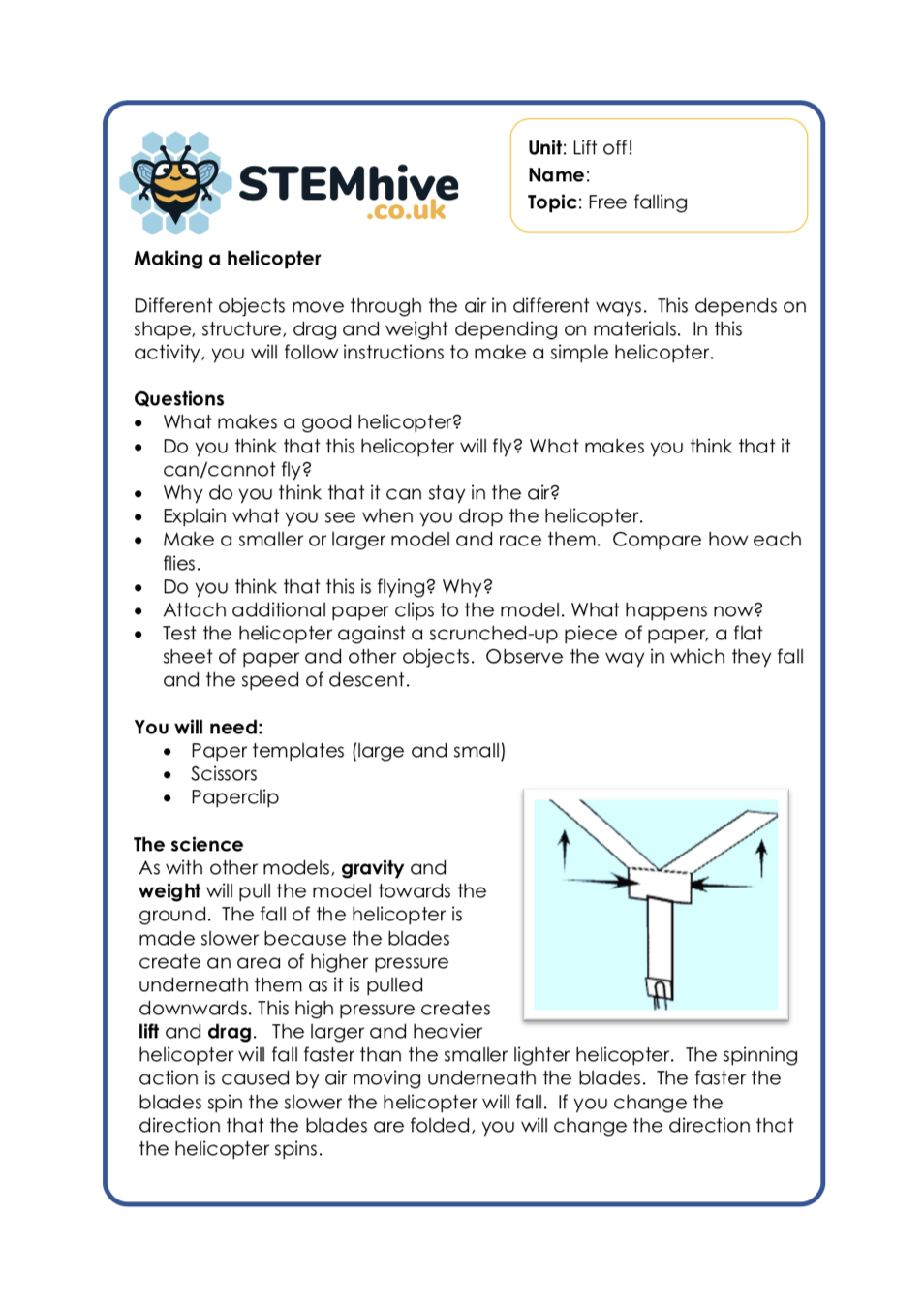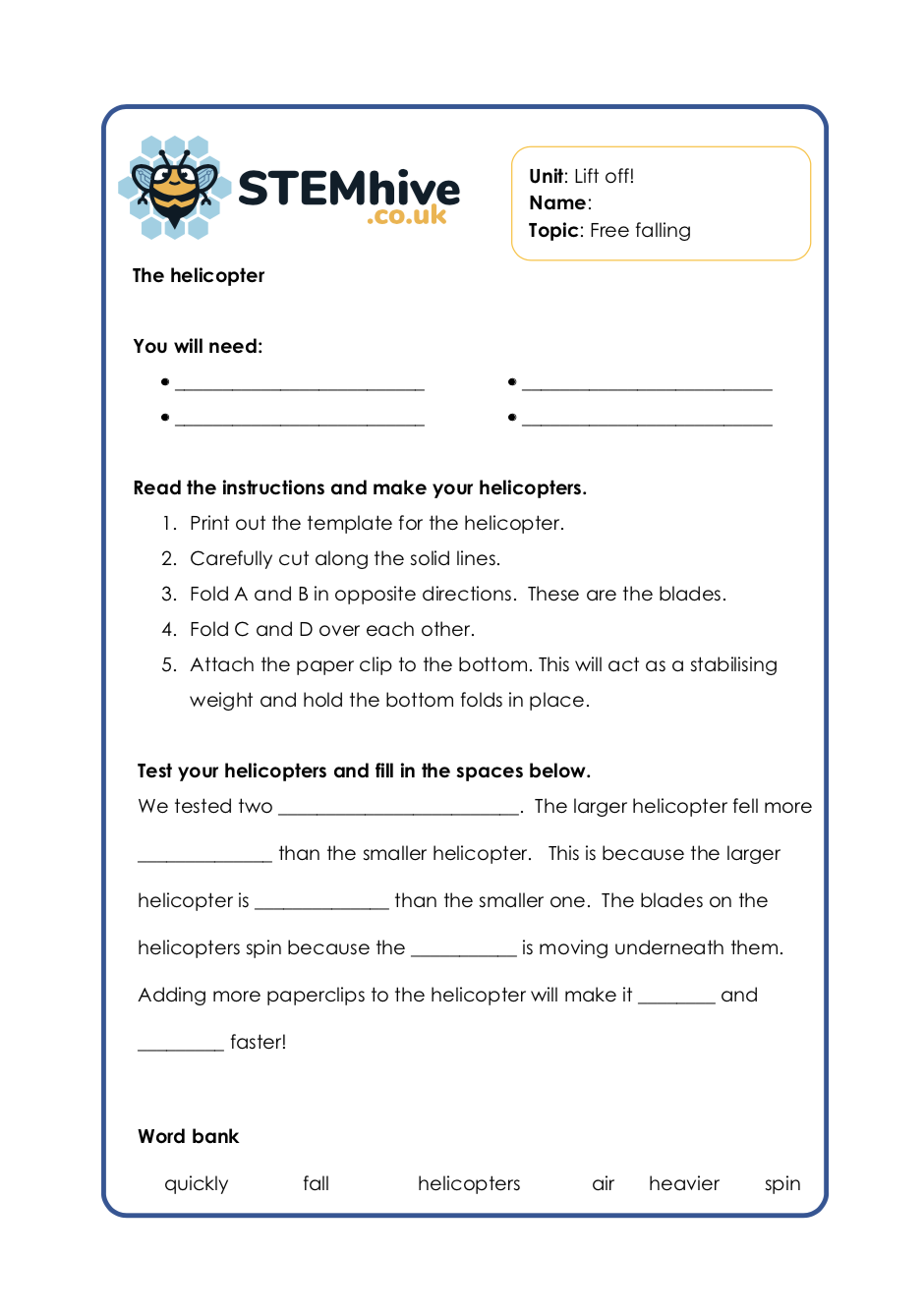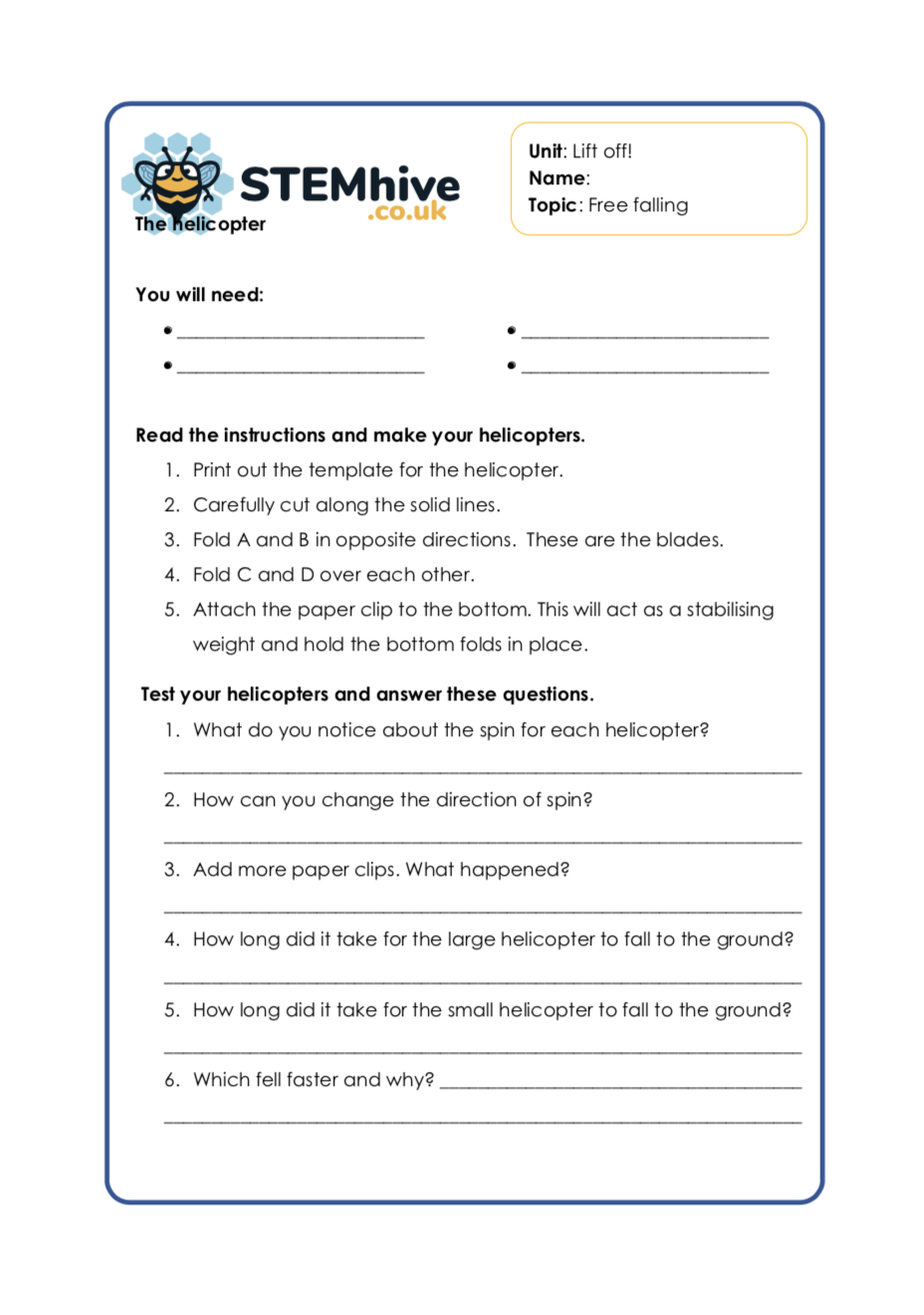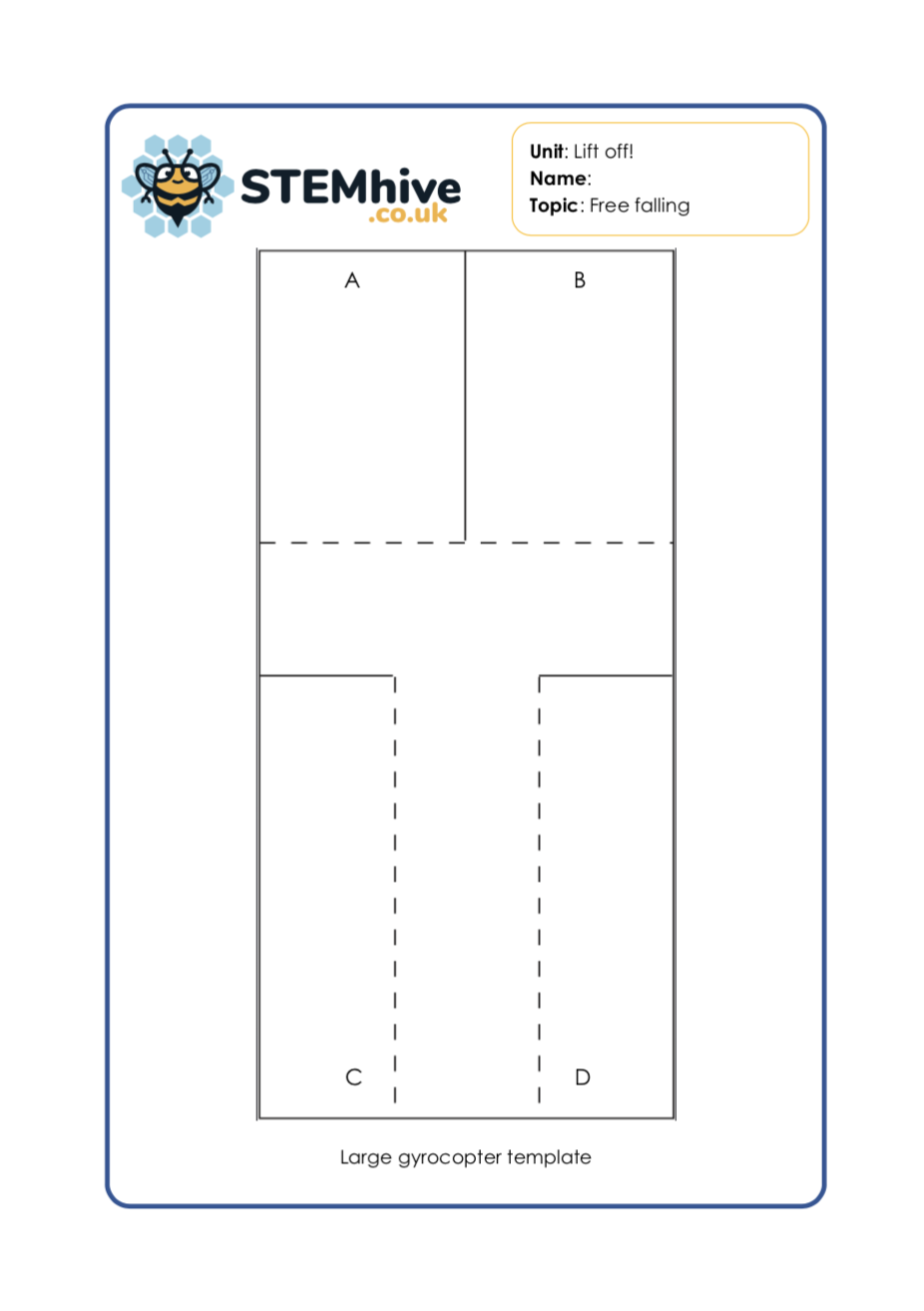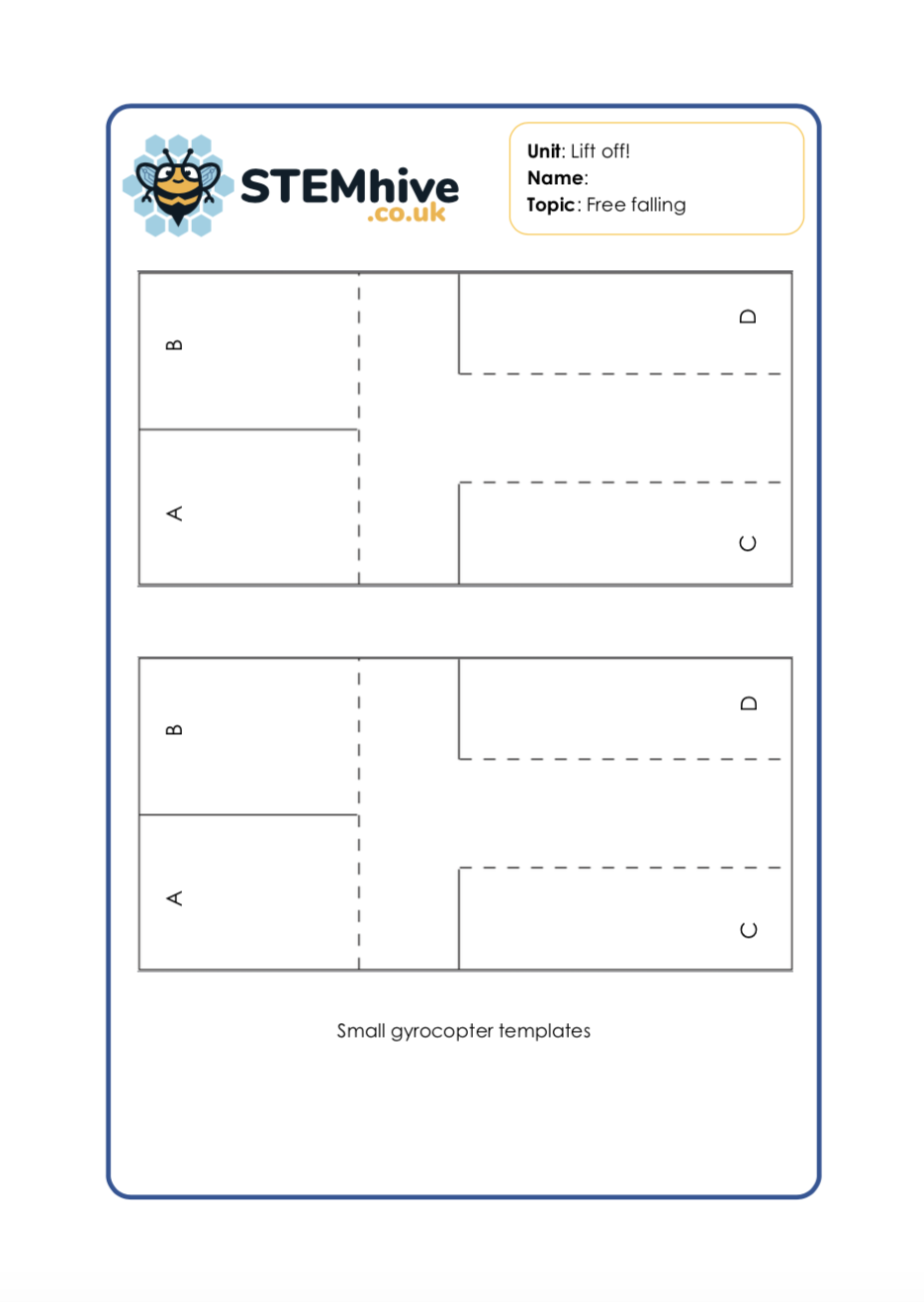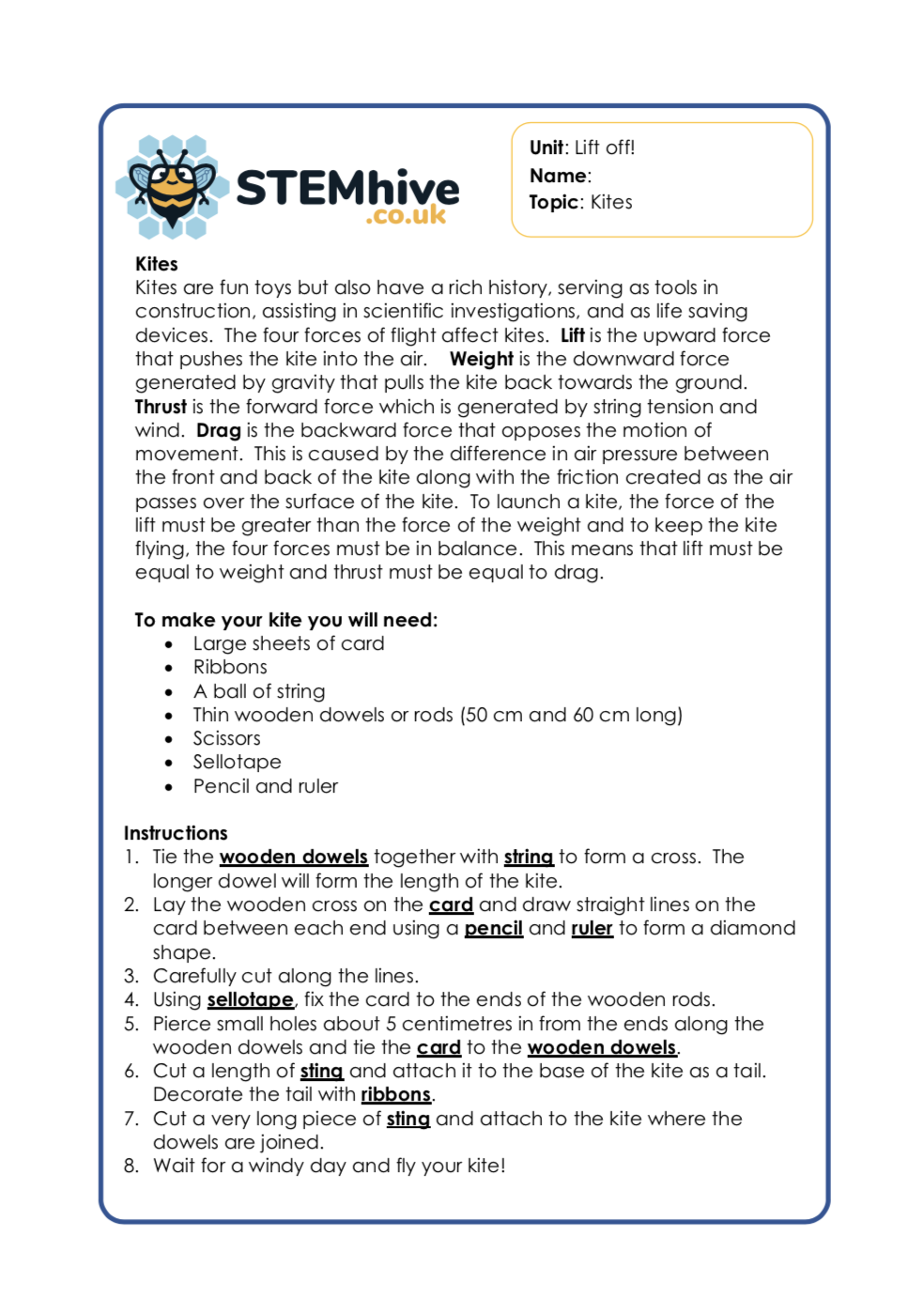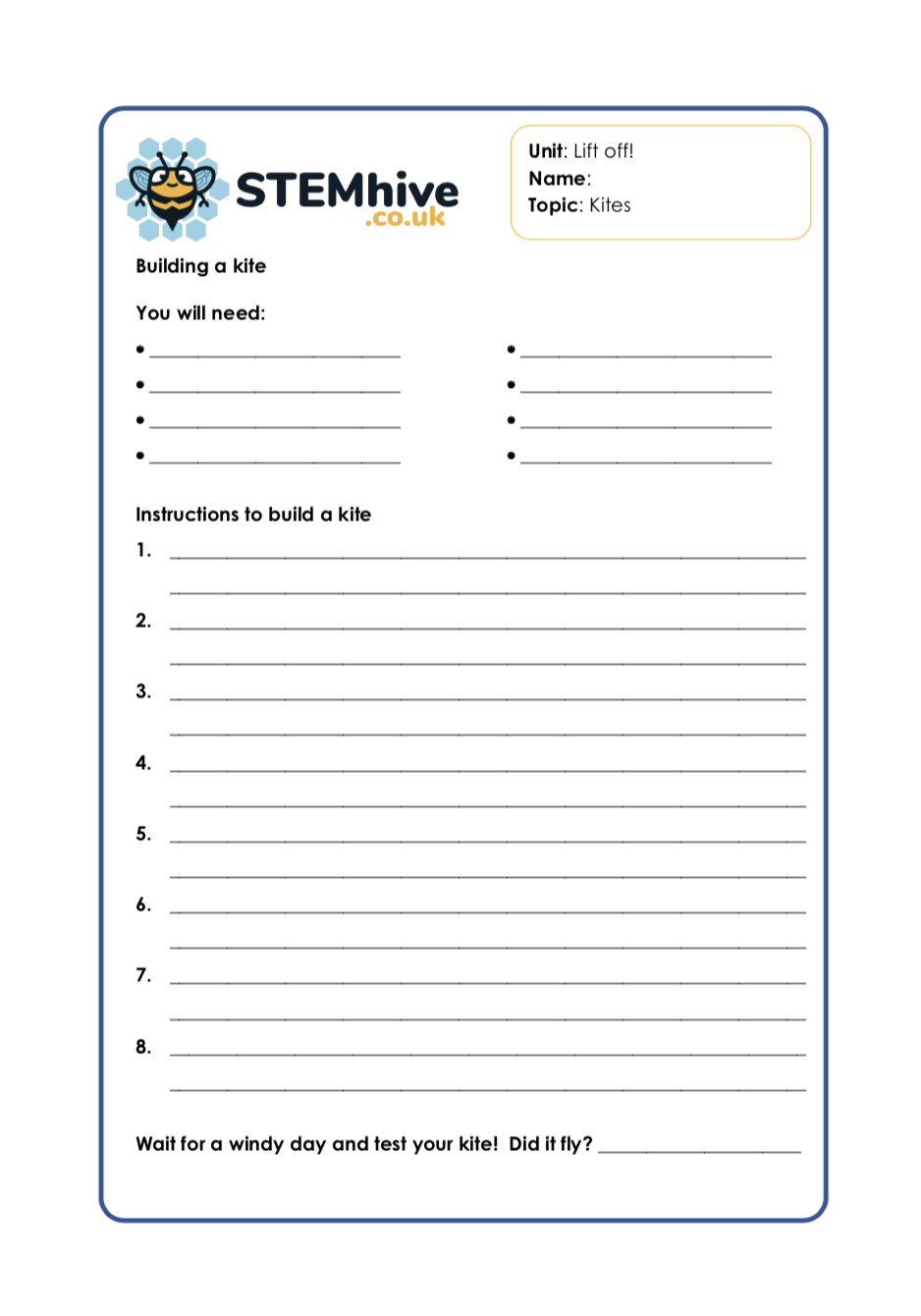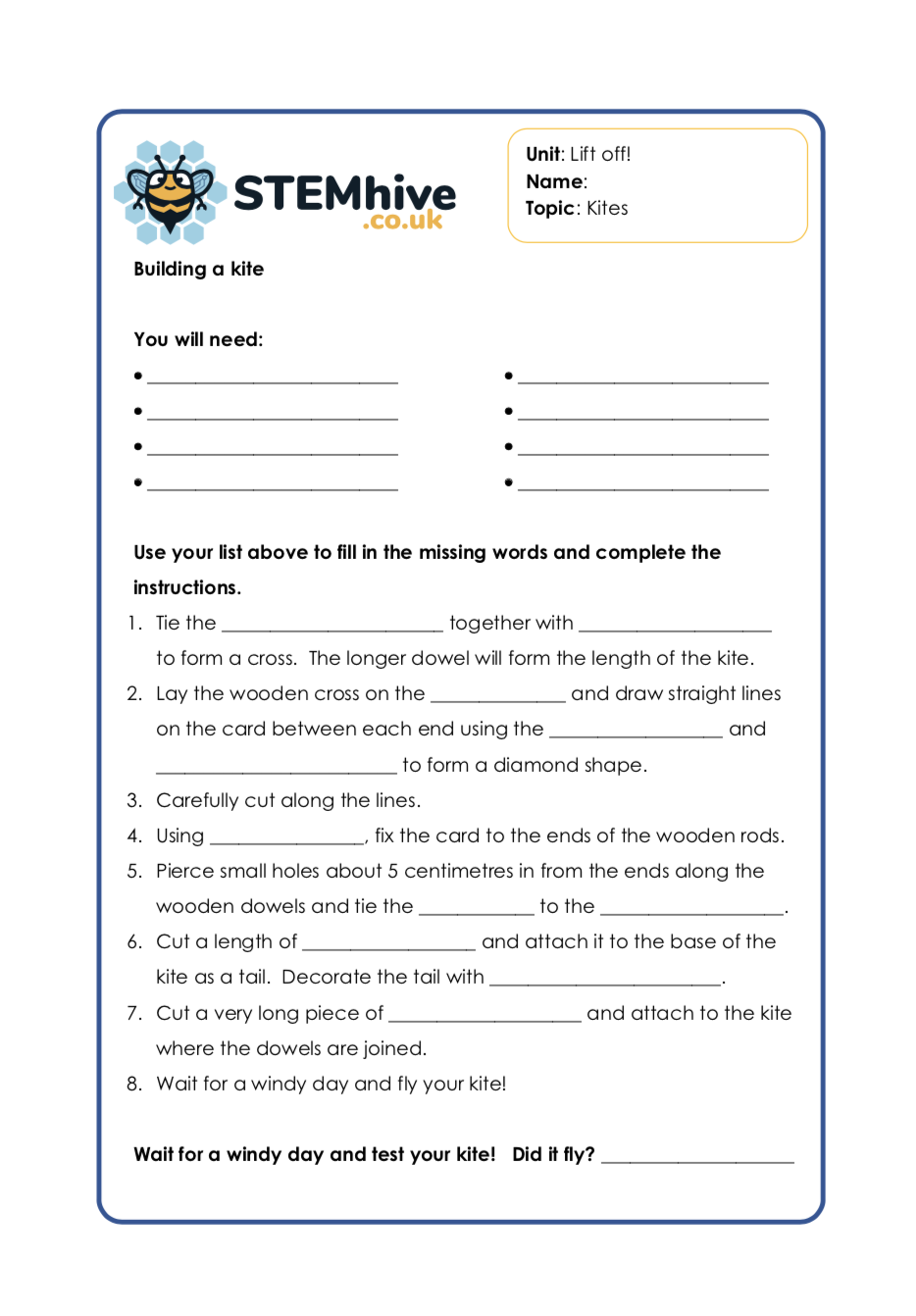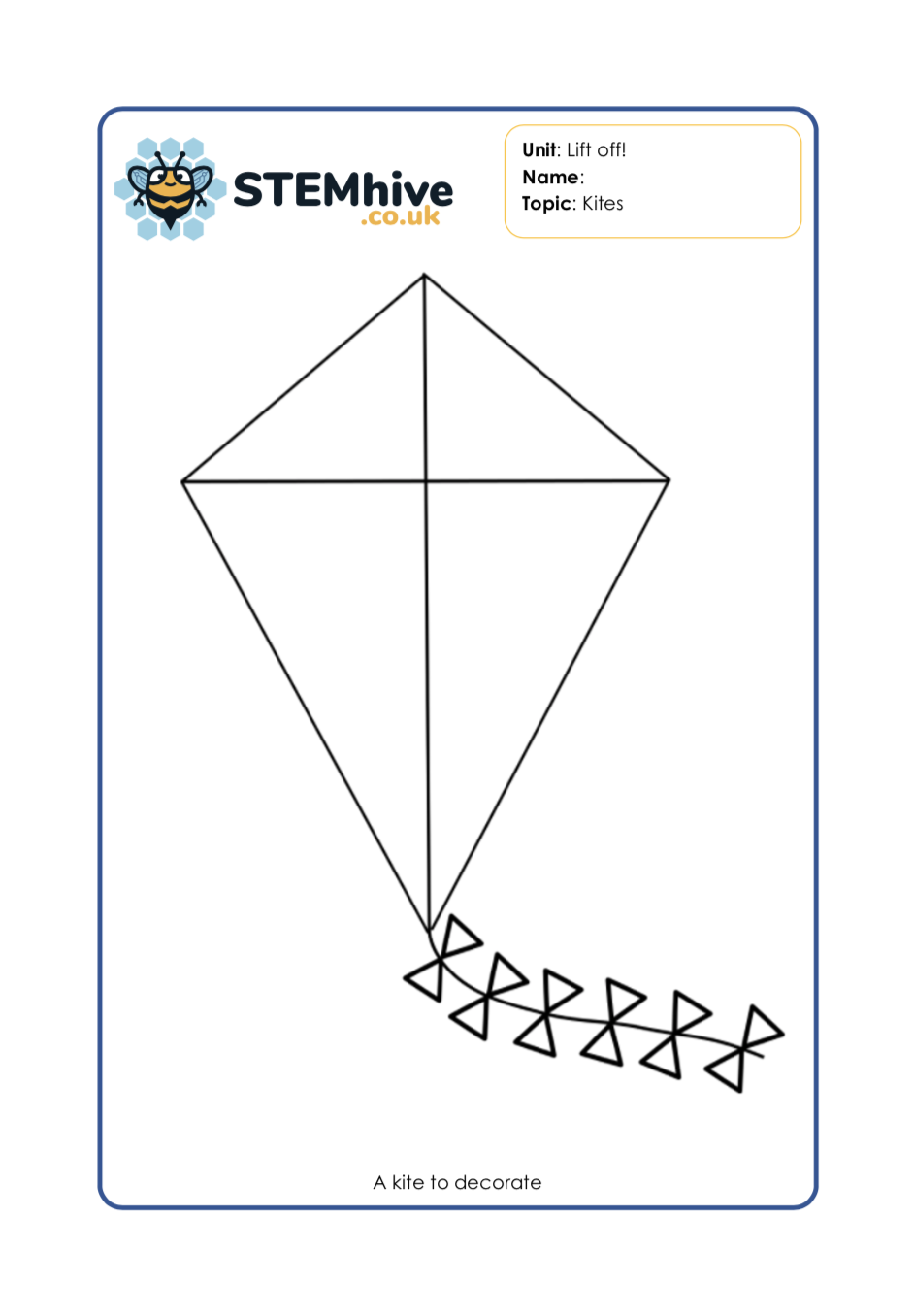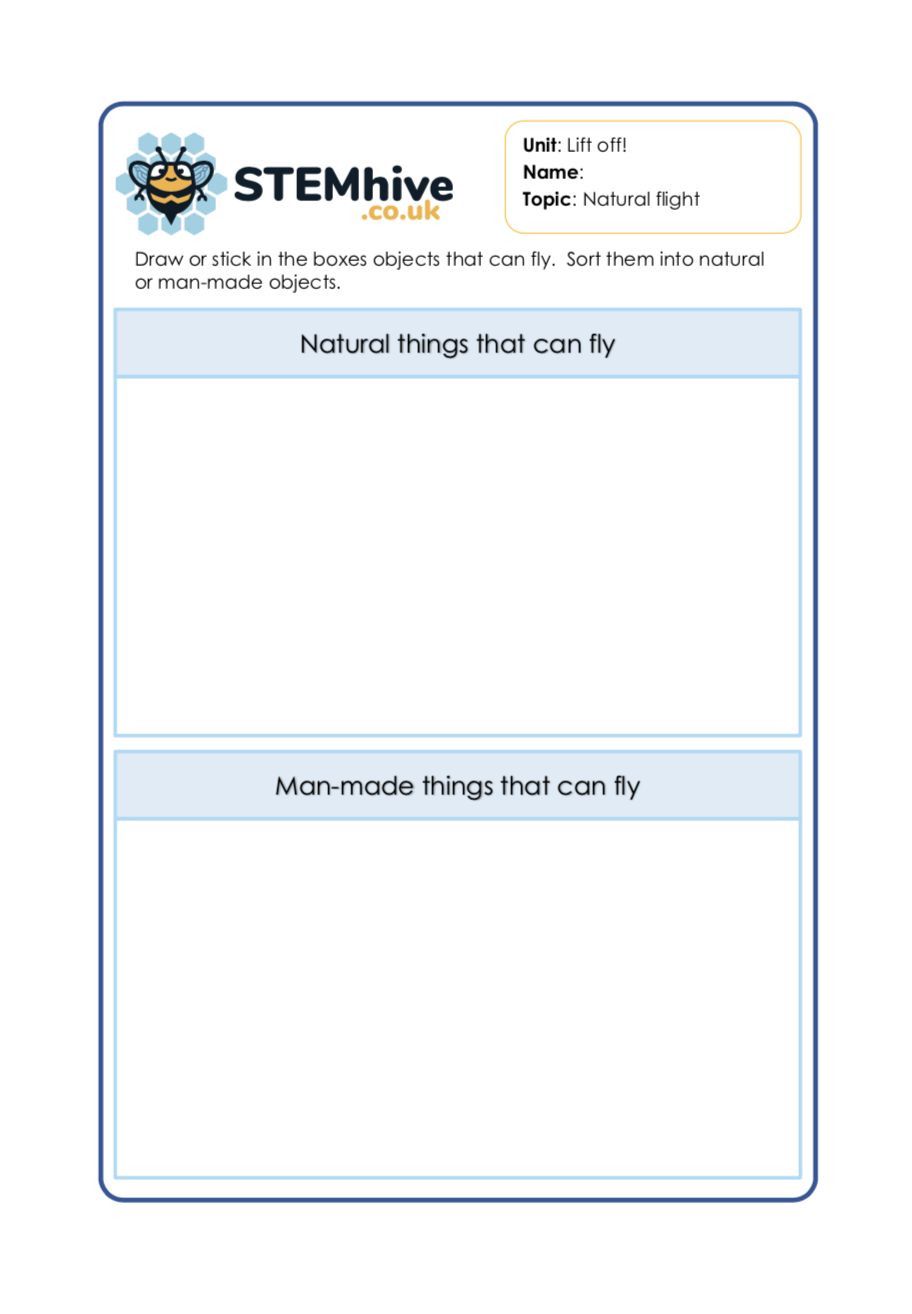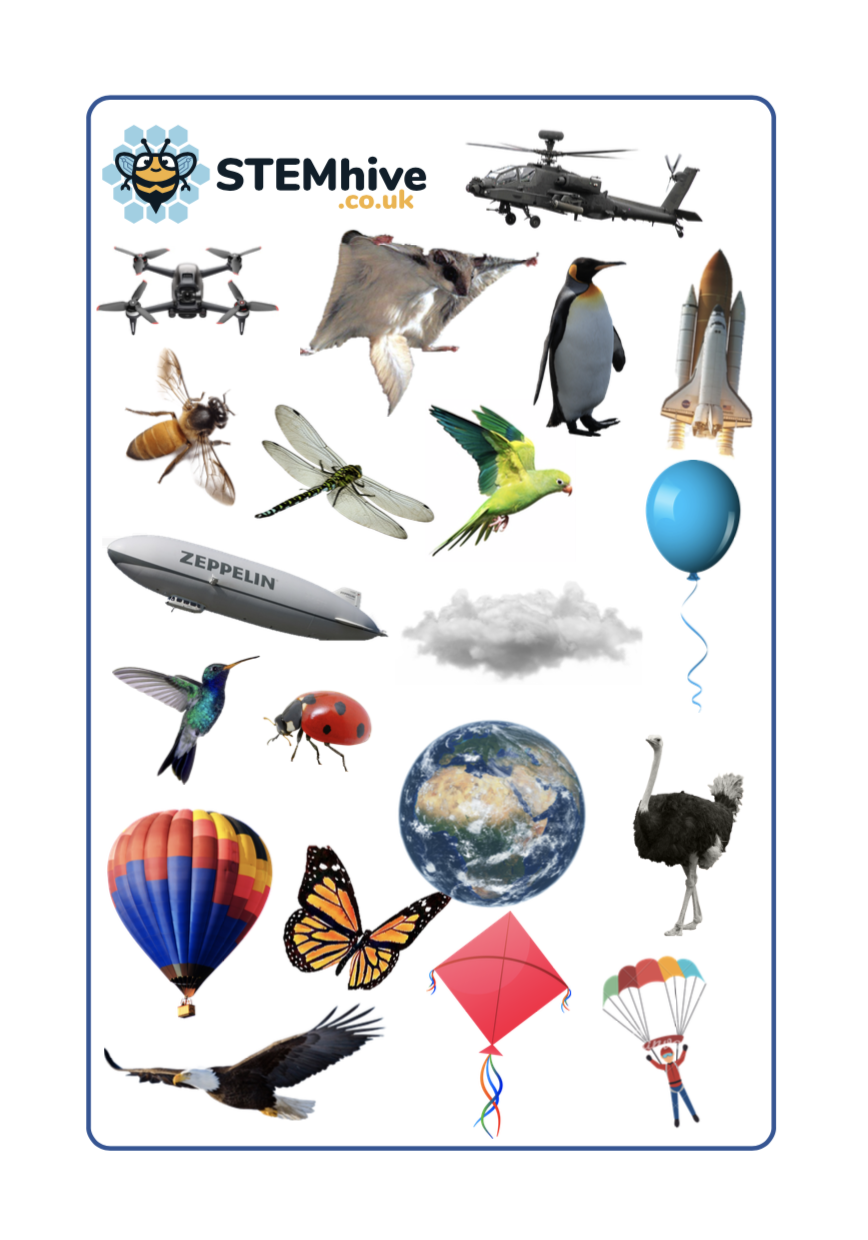Flight
Short Film Soar
This is a fantastic short animation about a young girl who is attempting to make a model plane fly.
This is a great way to introduce your topic on flight for Year 3 and Year 4 classes.
Unlock ResourceMain Focus: Topic Overview for Ages 7-9
This topic focusing on flight for children aged 7-9 consists of 11 activities and experiments to help your class gain understanding and knowledge of flight. They will look at designing and creating a kite, glider, helicopter as well as The History of the Wright Brothers, flight and nature and much more.
Unlock ResourceMain Focus: KWL Grid
It is always useful to begin a topic with a KWL grid.
It can establish the starting point for each children by gaining insight to what the children already know and what they could perhaps build on.
We have included a blank resource for your class to complete as well as a resource with a few hints to guide some children who may benefit from it.
Main Focus: What is Flight
This activity is aimed at Year 3 / Year 4 classes /children who are aged 7-9 and explores the question: what is flight?
Your class will explore the key teaching points behind the four forces of flight and also complete an activity at the bottom where they reflect or flight in nature and man-made flight.
Finally your class will label a diagram to show the forces of flight on a diagram. This sheet could be completed on another day to see if they remember.
Unlock ResourceMain Focus: Paper Planes and the Four Fources
This is a demonstration to observe flight and movement through the air. To do this, your class will need some paper planes and an open space such as the playground or assembly hall.
This resource encourages your class to throw the paper planes and reflect on what is happening using key vocabulary and terminology. It also works well with instruction writing. At the end, your class will modify their planes to produce drag.
Unlock ResourceMain Focus: Design an Aeroplane
The paper aeroplane challenge
Man-made moving objects are usually designed in such a way as to reduce drag and weight. Drag and weight are the forces that slows a moving object down and act against lift and thrust. If an object is aerodynamic if it can minimise the impact of drag and air resistance. For this age group, it is best if you use a basic folded design such as the dart.
Your class will complete the design using our templates and learn the science along the way.
Unlock ResourceMain Focus: Vocabulary and Terminology
Now that your KS2 – Year 3 / Year 4 class have grasped an understand of flight, the terminology, forces at play and flight in nature and man-made, your class will now complete the sentences to show their understanding.
Unlock ResourceMain Focus: The Wright Brothers
The Wright brothers were American aviation pioneers who have been credited with inventing, building and flying the world’s first successful motor-operated aeroplane.
We have created resources that encourage your class to watch a video clip then create captions for the key points, a list of research questions and a sequencing activity for the chronology of events in Wilbur and Orville’s lives.
Unlock ResourceMain Focus: The Egg Drop and Gravity
Can you drop an egg without it breaking?
This STEM activity explores the egg drop experiment and the science behind it – gravity. Your class will complete the experiment and learn a little about Isaac Newton, the falling apples and science behind it.
Explain to your Year 3, Year 4, Year 5 students that some activities such as parachuting, gliding, cycling or horse riding require us to protect our bodies from harm. To do this, we wear a helmet to protect our head from harm and potential brain injuries. This fun experiment will introduce Ks2 students to the importance of a helmet to reduce physical harm during impact and the role of a parachute in slowing down the descent of an object.
Main Focus: Parachutes, Gravity and Air Resistance
Designing a parachute
Learn about parachutes as you make an awesome parachute! Parachutes are used to increase drag on a free- falling object and reduce the force of impact. This means that the object falls more slowly.
The science
When you release the parachute, the weight will pull down on the strings opening the parachute. This will increase the surface area of the material, increasing drag and air resistance.
Wider learning
We also explore the theory of Aristotle over 2000 years ago, when he said that the rate of acceleration depends on the mass of an object.
We also look at a very famous man who disproves this theory and created an experiment of his own.
Your children will complete the activities on the pages and scan QR codes to watch video clips related to air resistance, gravity and Galileo Galilei.
Main Focus: Making a Glider
Making a glider
Different objects move through the air in different ways. This depends on shape, structure, drag and weight depending on materials. In this activity, your KS2 class will follow instructions to make a simple glider and record the information on our resources.
Questions
- Do you think that this glider can fly even though it does not have wings?
- Why do you think that it can stay in the air?
- Explain what you see when you throw the glider.
- Make a smaller model and compare how it flies.
- How far can you make it glide?
- Is gliding the same as flying?
Main Focus: Freefalling Helicopter/Gyrocopter
Making a helicopter/gyrocopter
In this pack we have created a range of resource including templates for the gyrocopters/helicopters. We have also include a vocabulary resource page, whereby your class complete the paragraph by adding in key words.
Different objects move through the air in different ways. This depends on shape, structure, drag and weight depending on materials. In this activity, your class will follow instructions to make a simple paper helicopter/gyrocopter.
Main Focus: Making a kite
In this STEM activity, your class will design and making their own kites. The first resource explores the science behind a kite and then your class can create the instructions of how to make one. We have included a few resources to cater for Year 2 / Year 3 and Year 4 classes.
The Science
Kites are fun toys but also have a rich history, serving as tools in construction, assisting in scientific investigations, and as life saving devices.
The four forces of flight affect kites. Lift is the upward force that pushes the kite into the air. Weight is the downward force generated by gravity that pulls the kite back towards the ground. Thrust is the forward force which is generated by string tension and wind. Drag is the backward force that opposes the motion of movement. This is caused by the difference in air pressure between the front and back of the kite along with the friction created as the air passes over the surface of the kite.
To launch a kite, the force of the lift must be greater than the force of the weight and to keep the kite flying, the four forces must be in balance. This means that lift must be equal to weight and thrust must be equal to drag.
Main Focus: Natural and man made flight
In this STEM activity, your class will sort the objects and decide whether they fly naturally or are man made.
We have also included some pictures of objects and animals that float or glide for discussion.
Encourage your class to research a few of their own animals and objects and add them. It doesn’t have to be pictures – they can write the words.
Unlock Resource
